Protestors toppled Portland’s Theodore Roosevelt, Rough Rider during the Indigenous Peoples Day of Rage in 2020. That it was toppled might be the most interesting thing about what was otherwise a pretty dull equestrian statue, sculpted by Alexander Phimister Proctor and installed in 1922.
Its empty plinth–standing in front of the Portland Art Museum in the historic heart of protest in Portland–has the potential to illuminate much more than a pompous statue of one of our most famous presidents ever could. With a little courage and imagination, it could open up a platform–literally–for new art, new myths, and new heroes, as well as creating an opportunity to examine the dark side of Roosevelt’s mythical reputation and that of American imperialism as a whole.
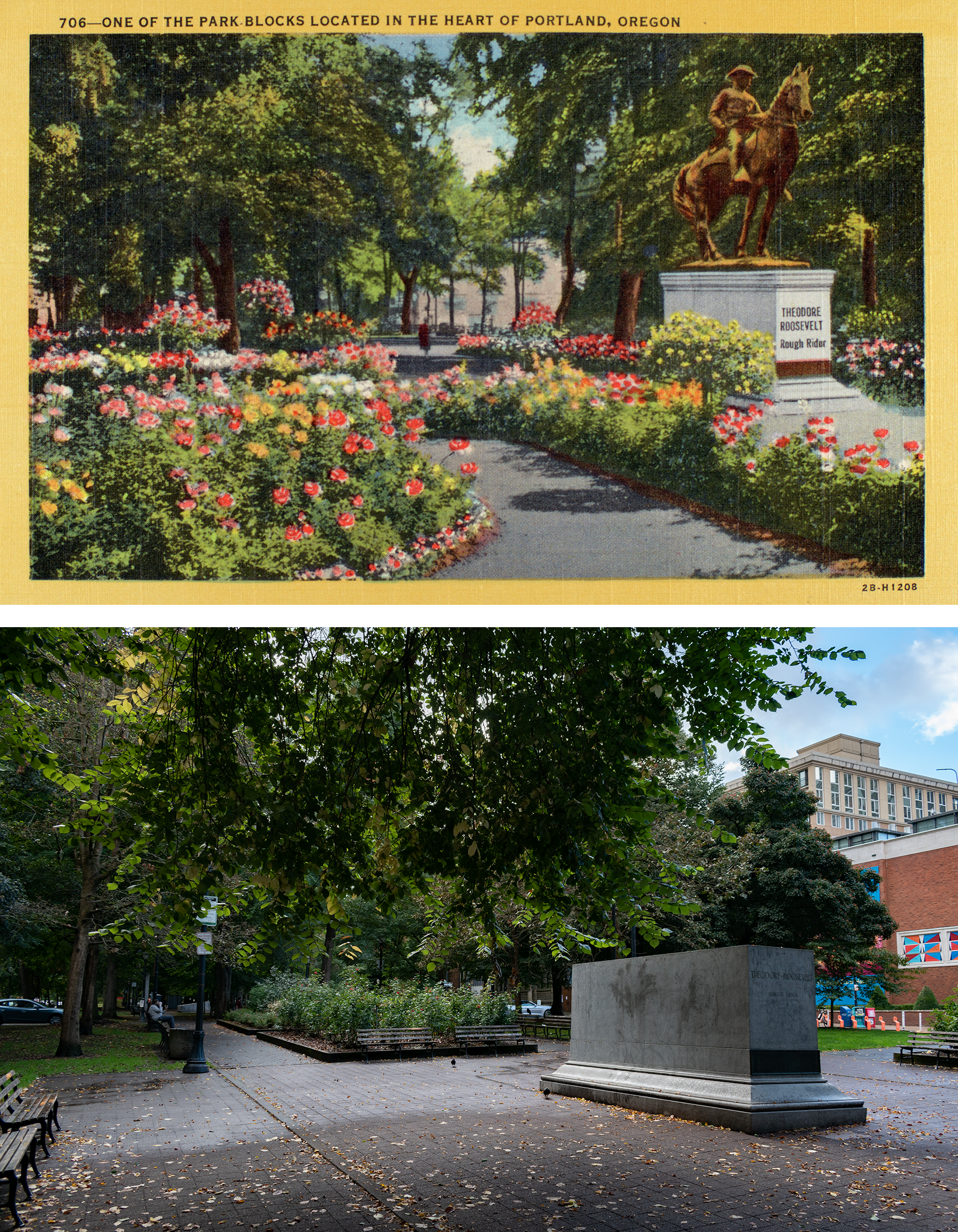
So, what’s changed? ...well, you know. Besides the obvious, it looks like the landscape plan has shifted a bit since the 1940s, with some planters removed and park benches added.
Theodore Roosevelt, Rough Rider was a gift to Portland from Dr. Henry Waldoe Coe, a doctor who’d befriended Roosevelt during the future president’s brief stint in the Dakota Territory in the 1880s. Coe–by then a bigshot in Oregon–served as a supporter and confidant for the rest of Roosevelt’s career.
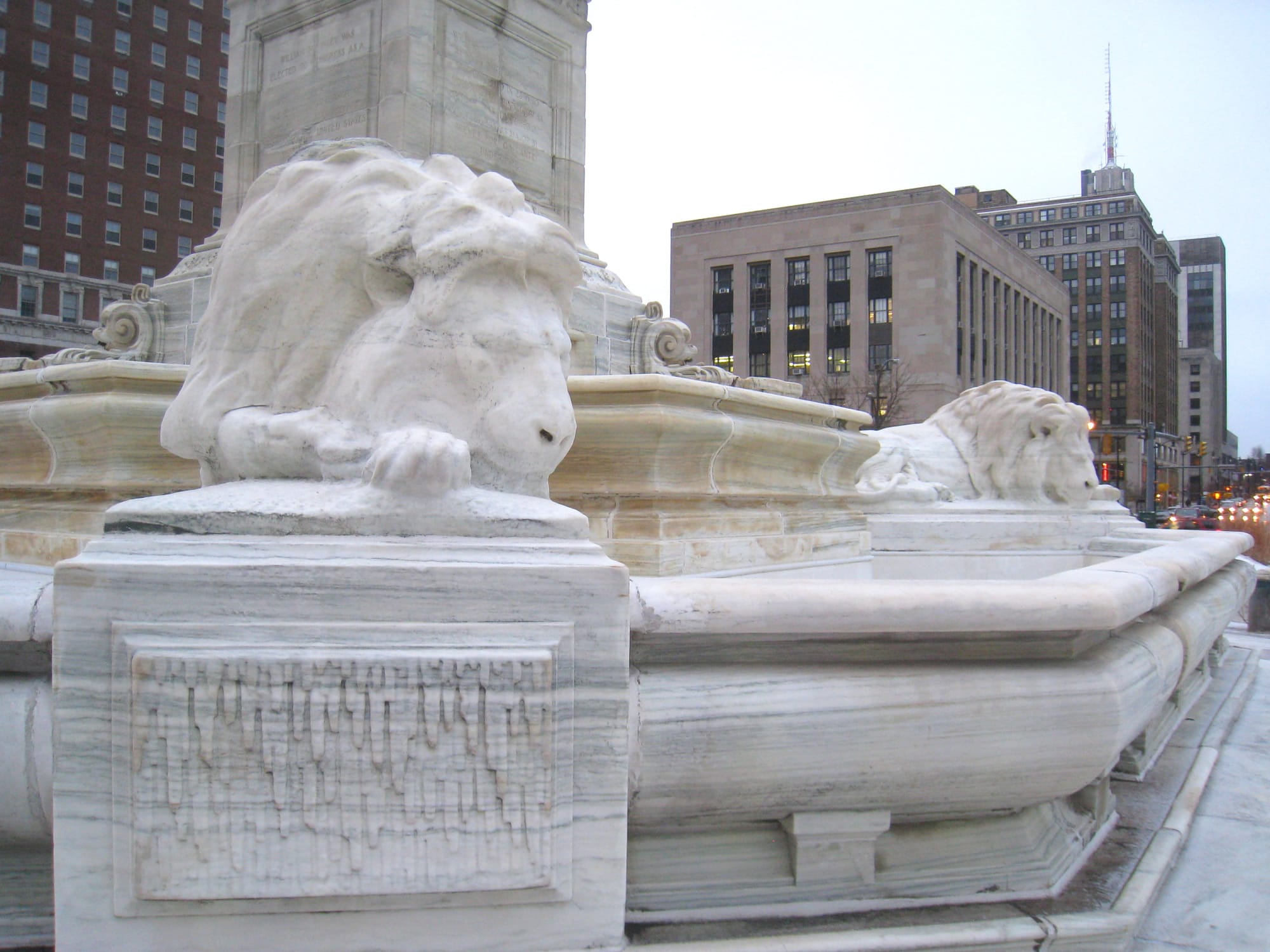
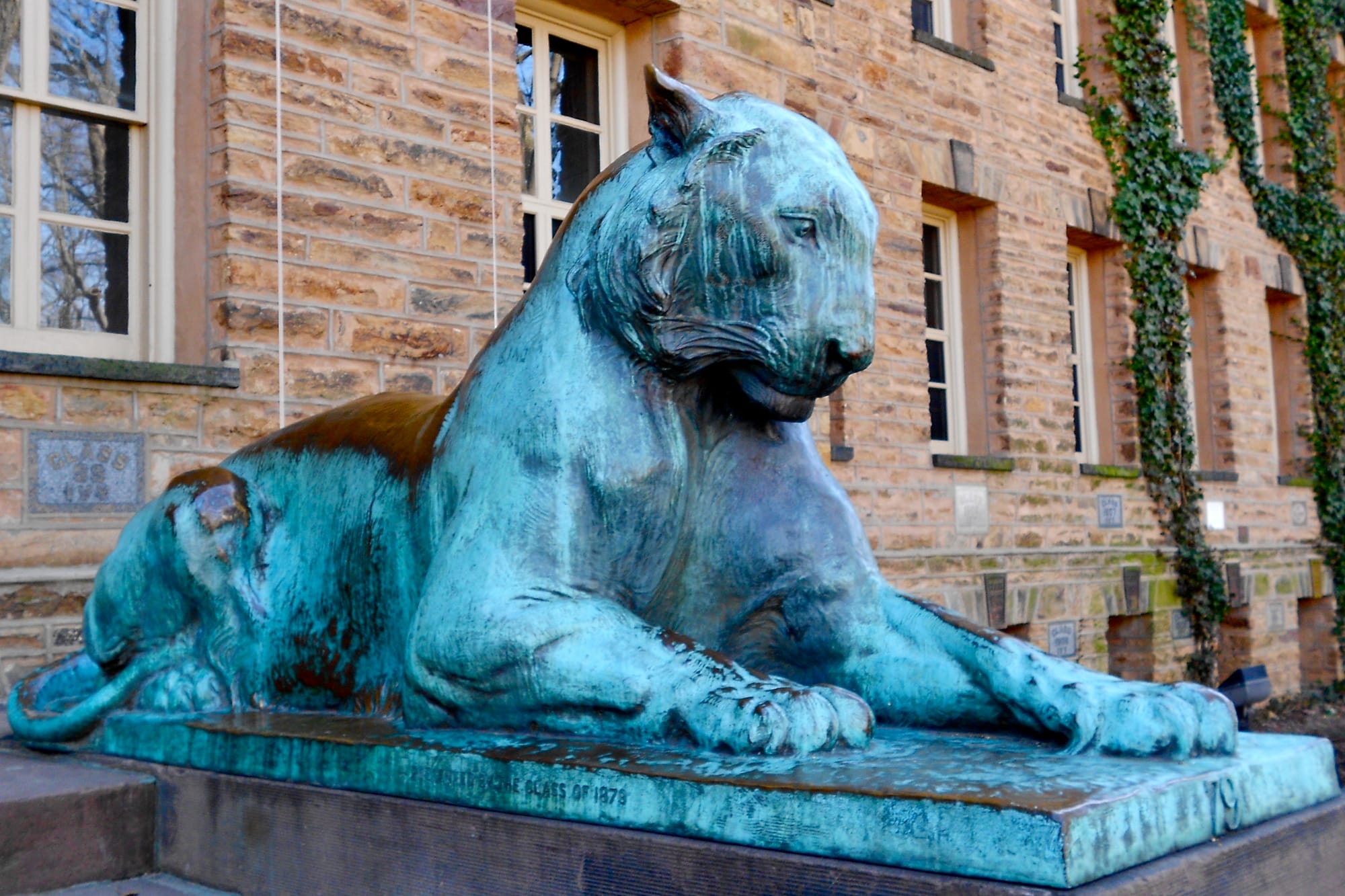


Alexander Phimister Proctor sculptures: lions of the McKinley Monument in Buffalo, New York; tigers at Princeton University; Bucking Bronco in Denver, Melvyn Schieltz, Library of Congress via Wikimedia Commons; lion on the 16th Street Bridge in Washington, D.C., Library of Congress via Wikimedia Commons
After Roosevelt’s death in 1919, Coe commissioned sculptor Alexander Phimister Proctor to create an equestrian monument of his friend. Proctor was a disciple of Augustus Saint-Gaudens and a successful Beaux Arts sculptor who focused on Western themes–an appropriate pick given the central role Roosevelt’s (single) year on the Western Frontier plays in the mythmaking of his life. The two had even actually met at the 1893 World’s Fair in Chicago, where Roosevelt supposedly indicated that he liked Proctor’s work. Particularly known for his work as an animalier, Proctor’s bronze menagerie includes the horse of General John Logan in Chicago’s Grant Park, lions and buffalo on bridges in Washington, D.C., and the sleeping lions of the McKinley Monument in New York.
After Proctor finished his initial take on Theodore Roosevelt, Rough Rider, it went to Gozo Kawamura. Kawamura was a Japanese artist who worked in New York from the early 1900s until 1940, specializing in enlarging models for large-scale statues made through lost-wax casting (as well as cows–he was apparently very good at sculpting cows). The Met has an incredible video of Kawamura working on this one, and there is also a tiny Gozo Kawamura Memorial Museum of Art in his home prefecture of Nagano in Japan.
With conceptions of virility and masculinity core to the Roosevelt mystique, it was a deliberate choice to depict Roosevelt as a Rough Rider, the volunteer cavalry brigade Roosevelt helped organize for the Spanish-American War.
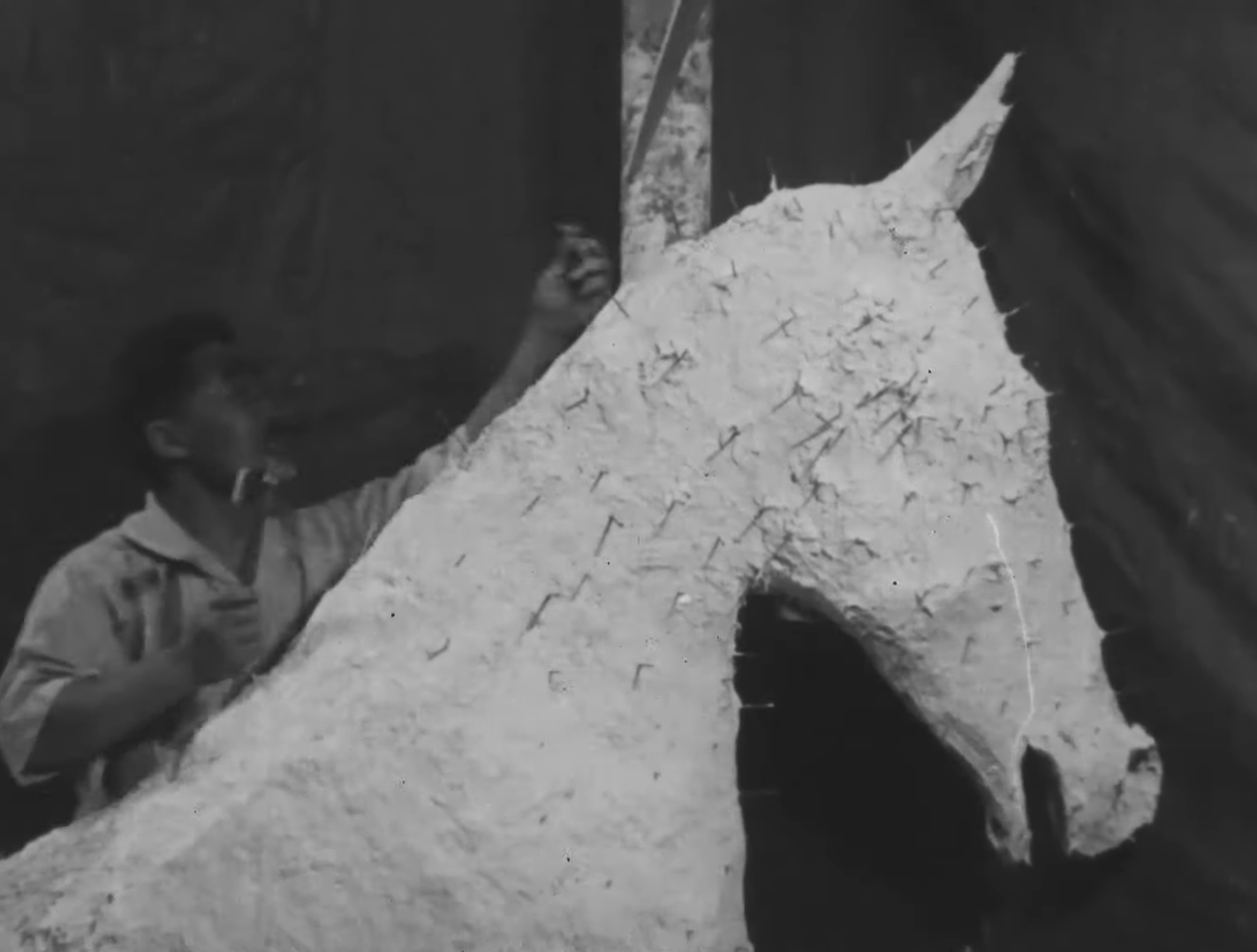
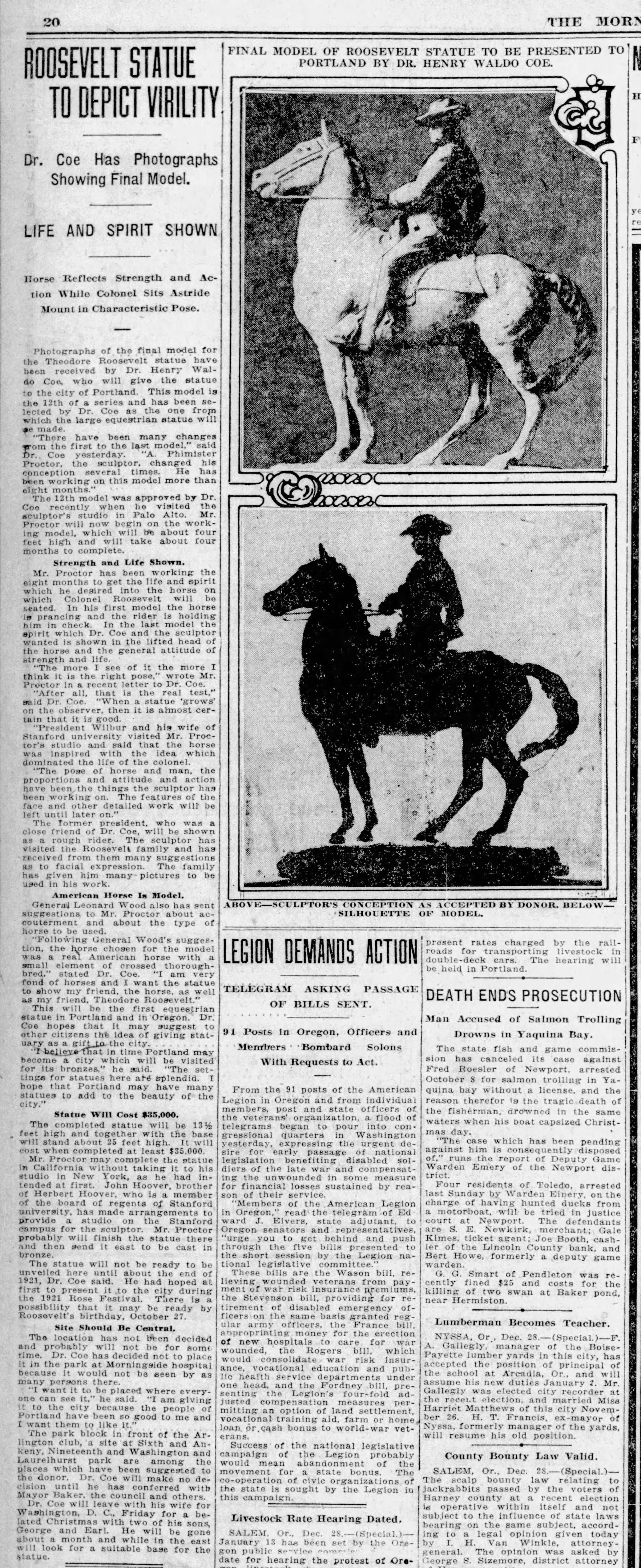
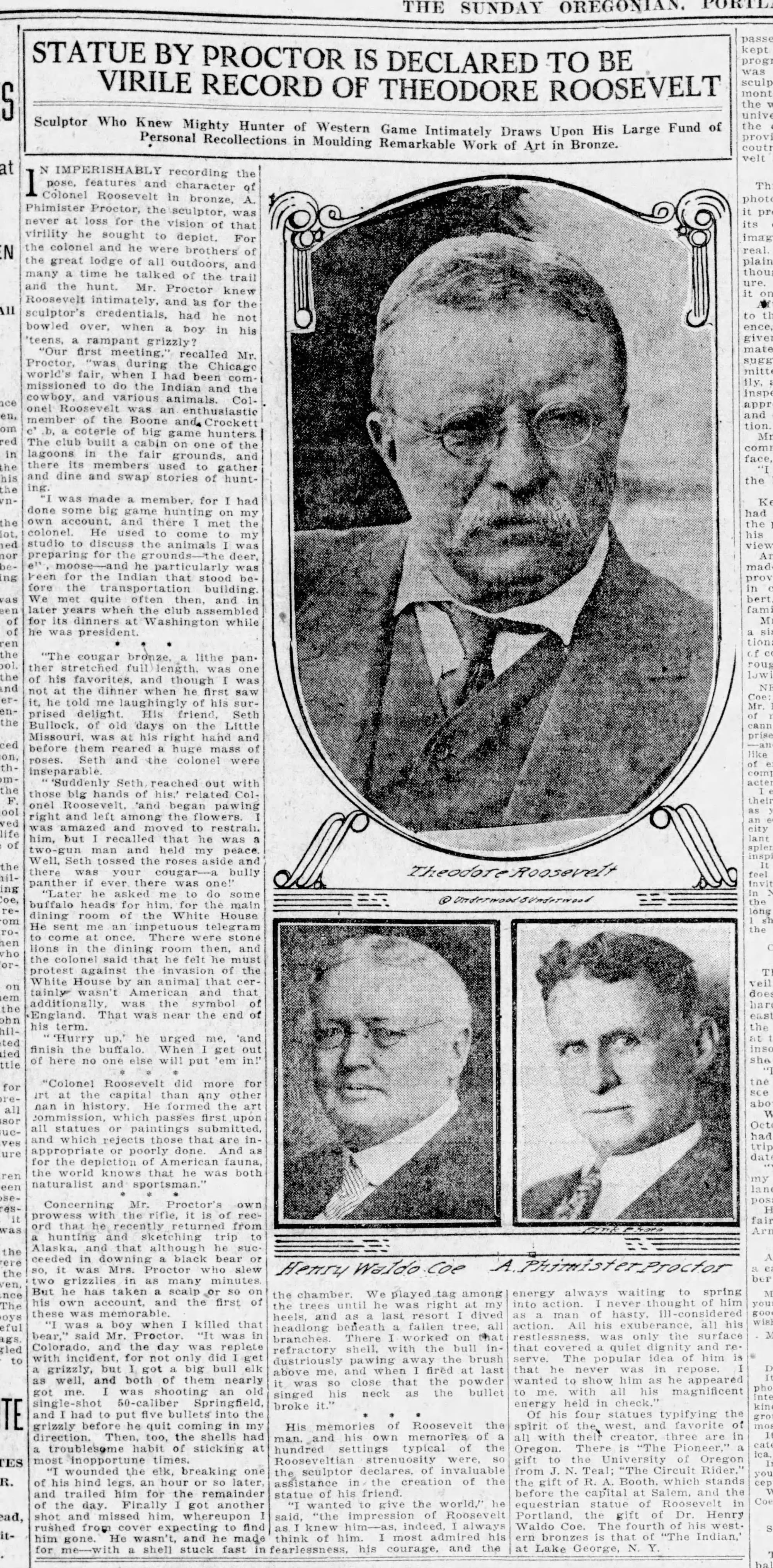
Still from Gozo Kawamura enlarging Theodore Roosevelt, Rough Rider, the Met | 1920 and 1922 articles about the "virility" of the sculpture
…but researching this helped crystalize for me that Roosevelt’s conduct around that war was kind of insane. As the sitting Assistant Secretary of the Navy under President William McKinley, Roosevelt clamored for war against Spain. Then, having received his war, Roosevelt resigned his position in the government–which was presumably an important one, since the war was fought around islands in the Gulf of Mexico and the Pacific–and instead organized an all-volunteer cavalry, the Rough Riders.
The US press would call the Spanish-American War a “splendid little war”. After successfully installing a pliant regime in Cuba, and seizing Puerto Rico, Guam, and the Philippines from Spain, the US was soon forcing Filipino civilians into concentration camps as a counterinsurgency tactic to repress the independence movement there.
...Splendid is not the word I would use.
The Rough Riders spent all of one month fighting in Cuba, but the publicity made Roosevelt a national figure. Within a year he was governor of New York. Within two years, Vice President to McKinley. Within three, he was President of the United States.
(Was this the career path that insane neoconservative hawks like John Bolton were hoping to emulate?)
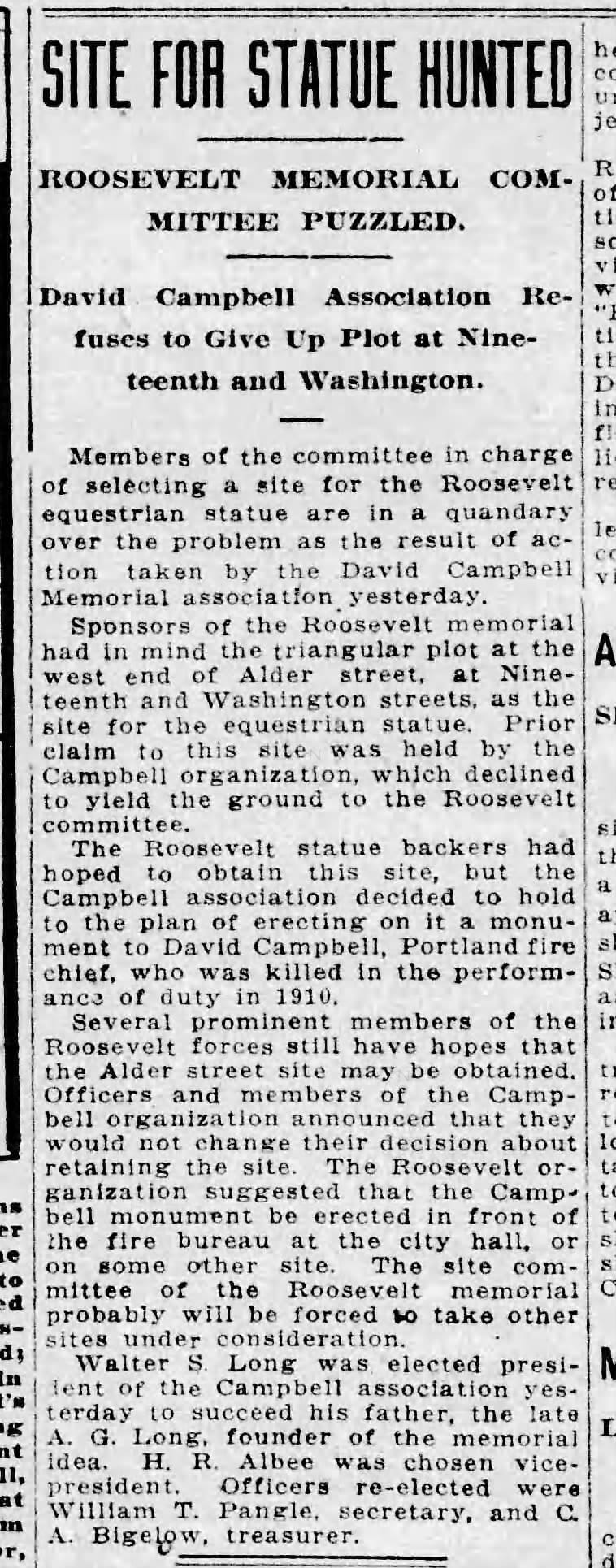
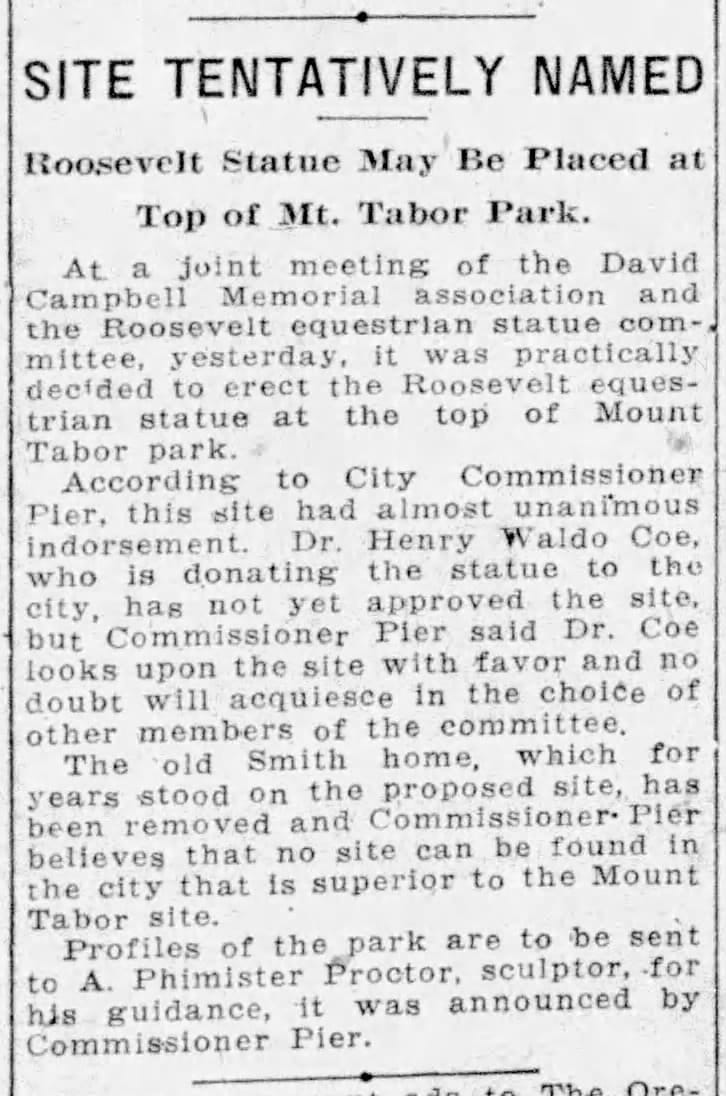
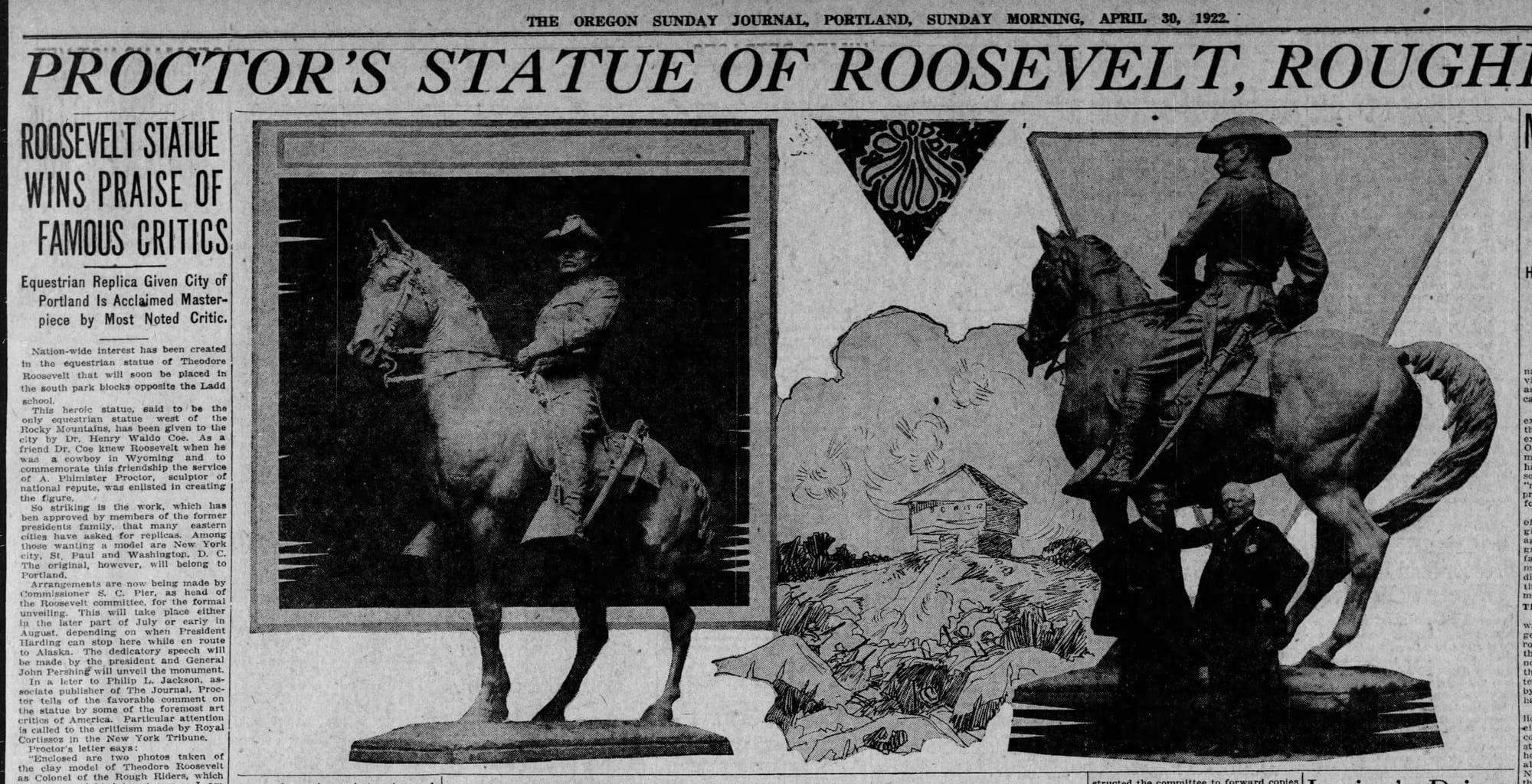
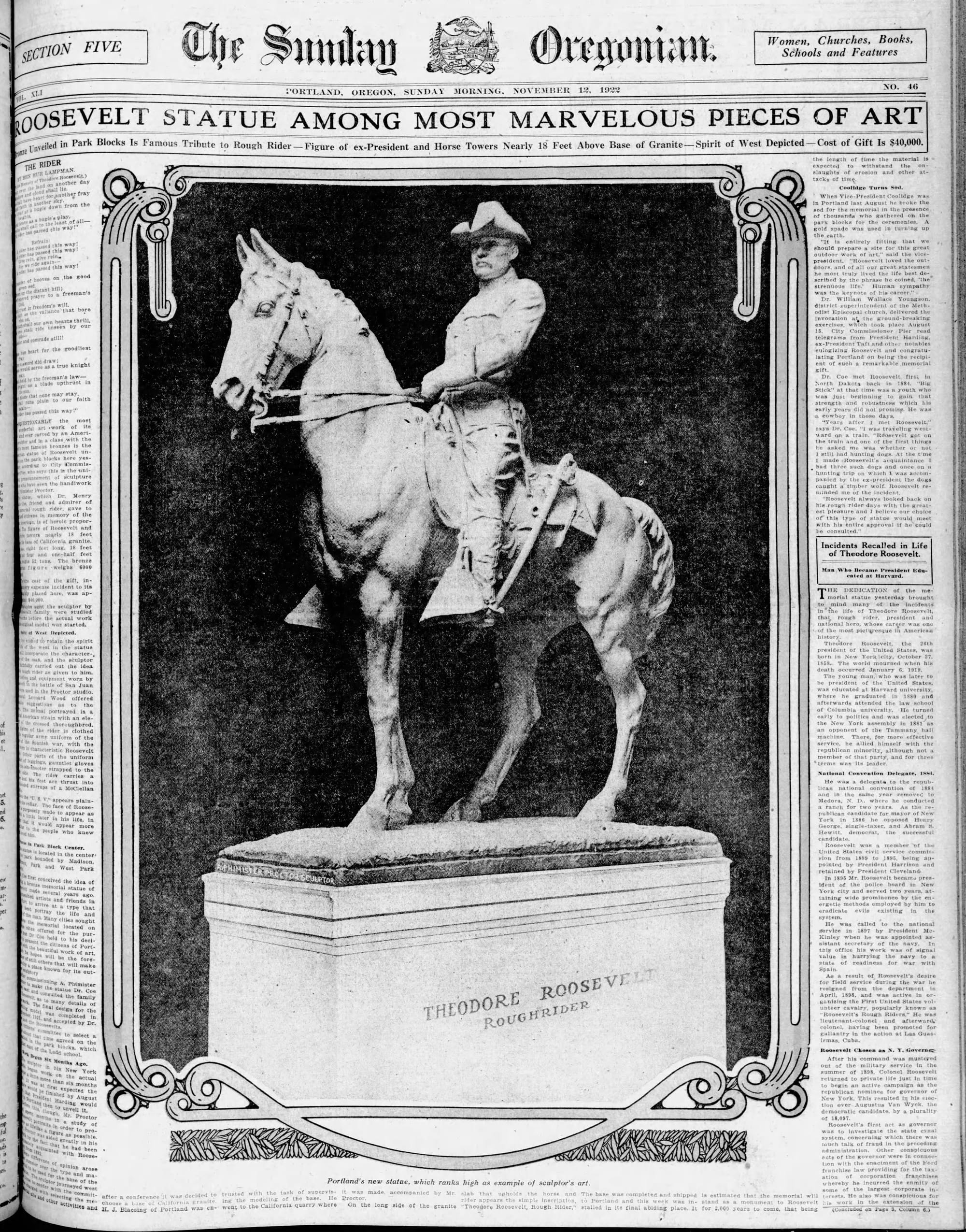
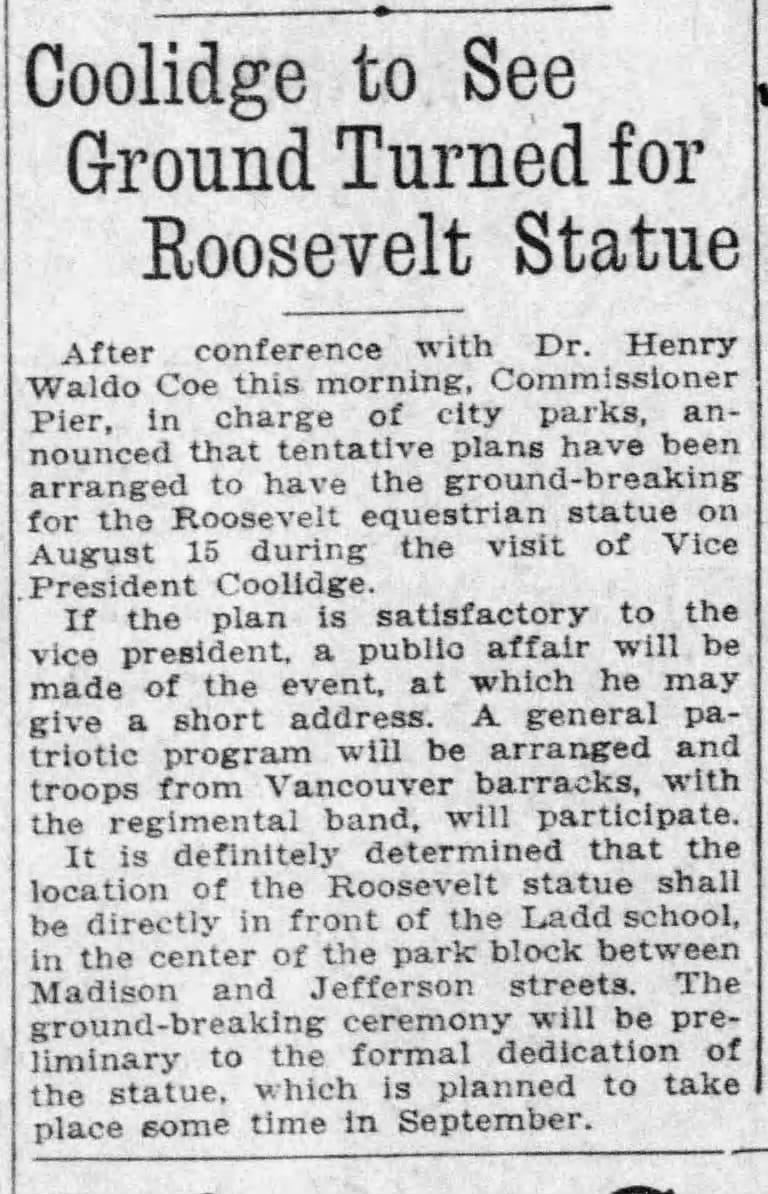
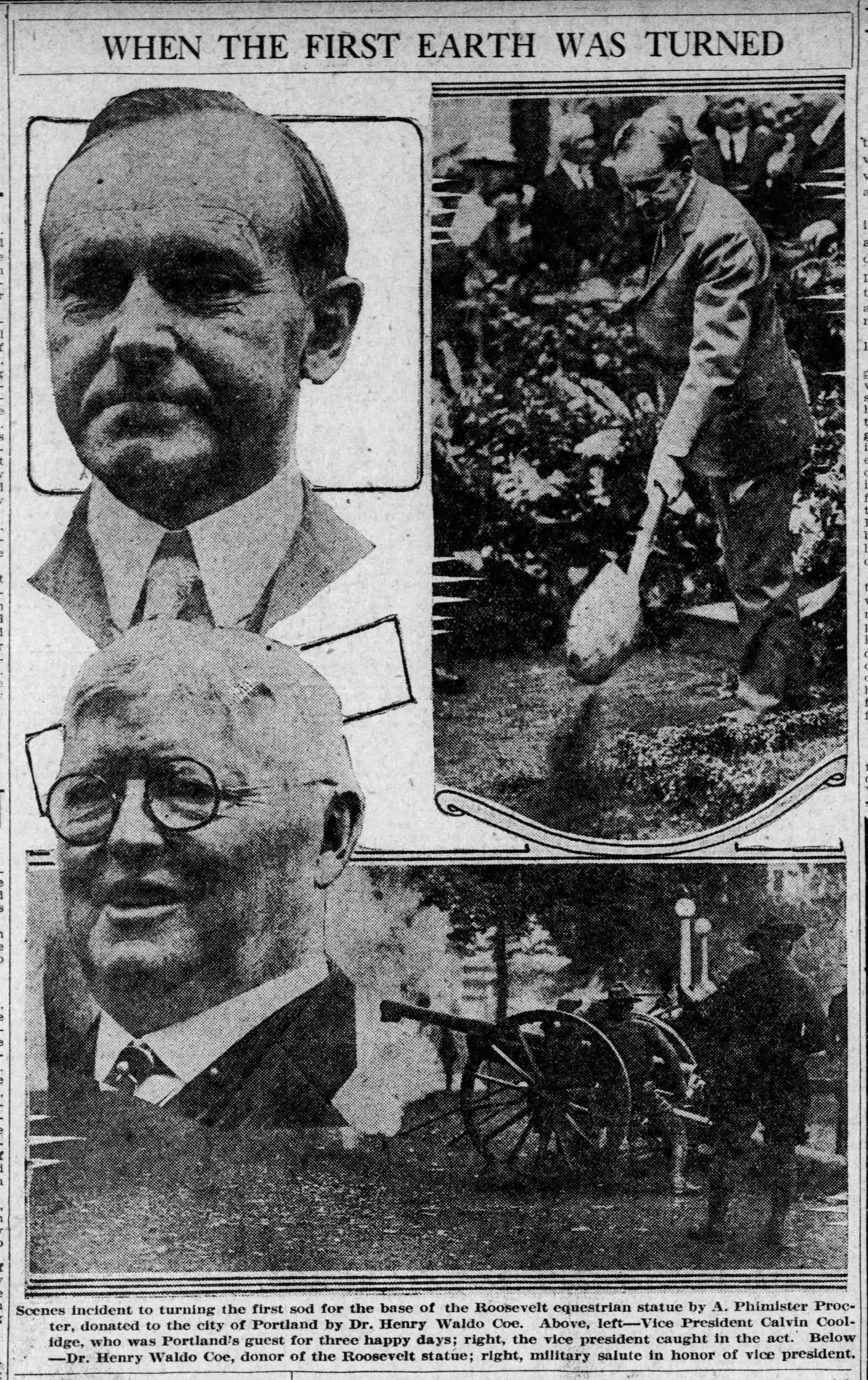
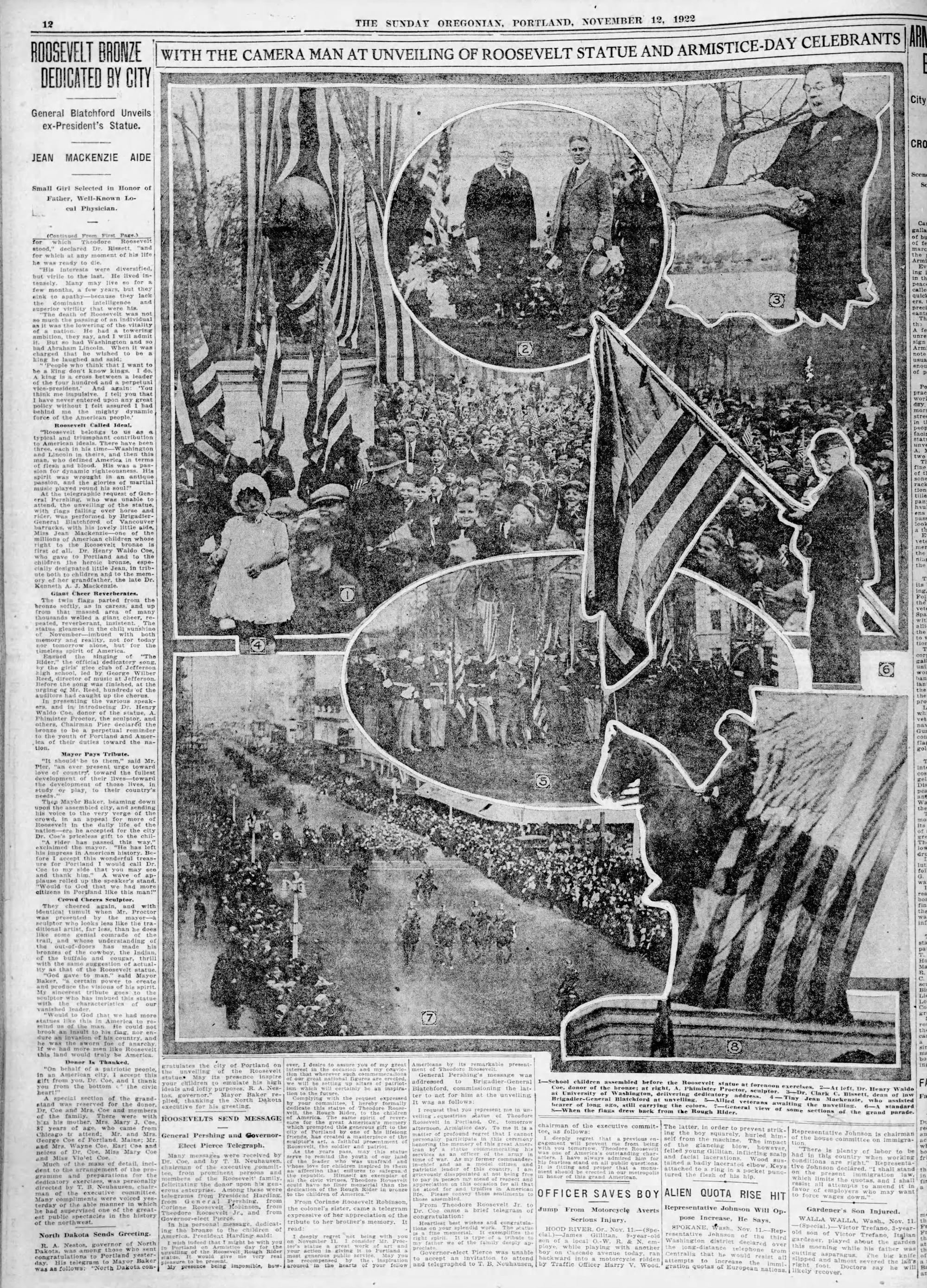

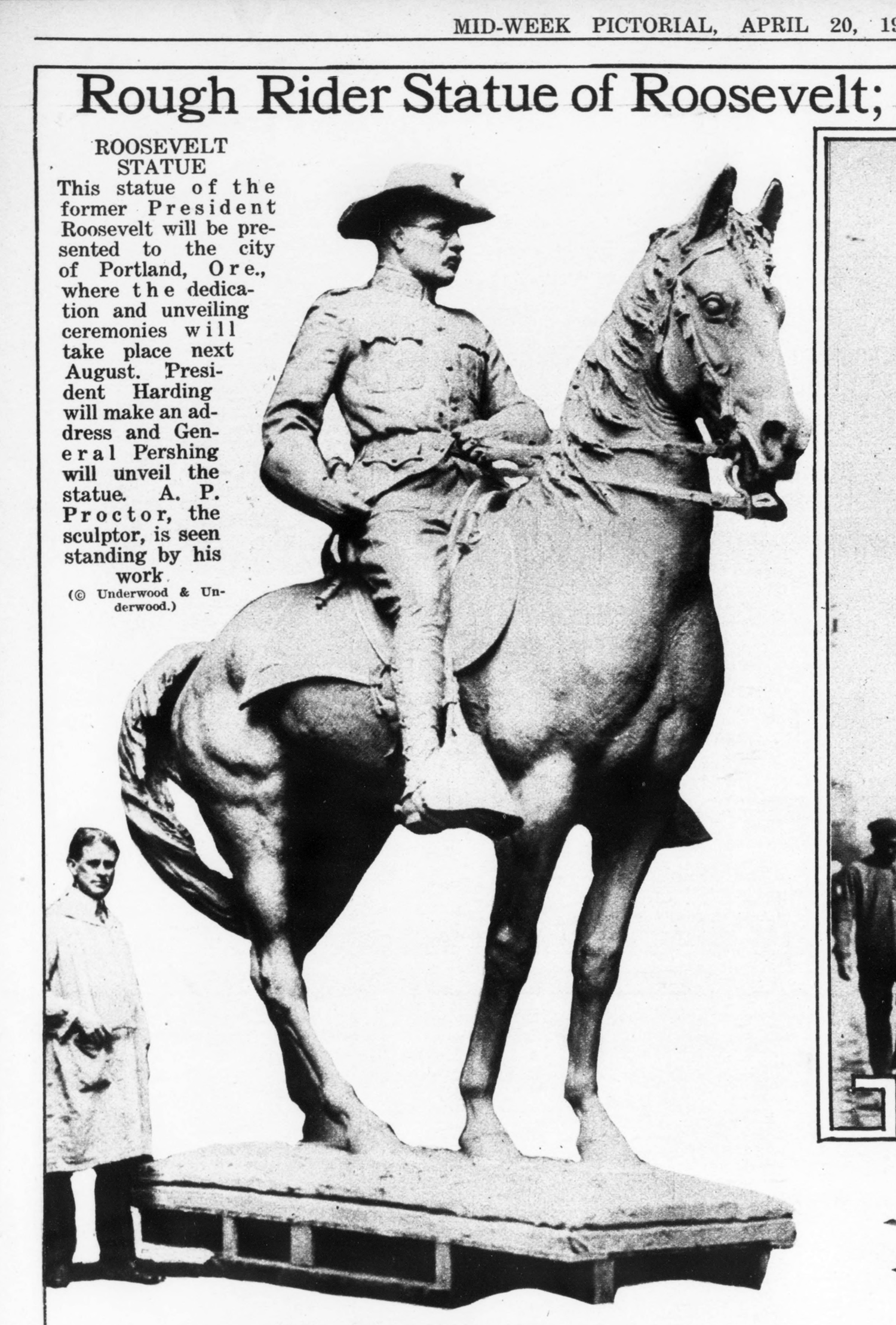
1921 articles about the search for a site | 1922 articles about the groundbreaking | 1922 articles about the dedication
Regardless–after some serious conflict about where to place Coe’s gift, in 1922 Vice President Calvin Coolidge attended the groundbreaking for this plinth in the South Park Blocks. After passing through the Panama Canal to get to Portland, it was unveiled on Armistice Day of that year. Within twenty years of its unveiling, however, there were semi-serious conversations about relocating it elsewhere in Portland.
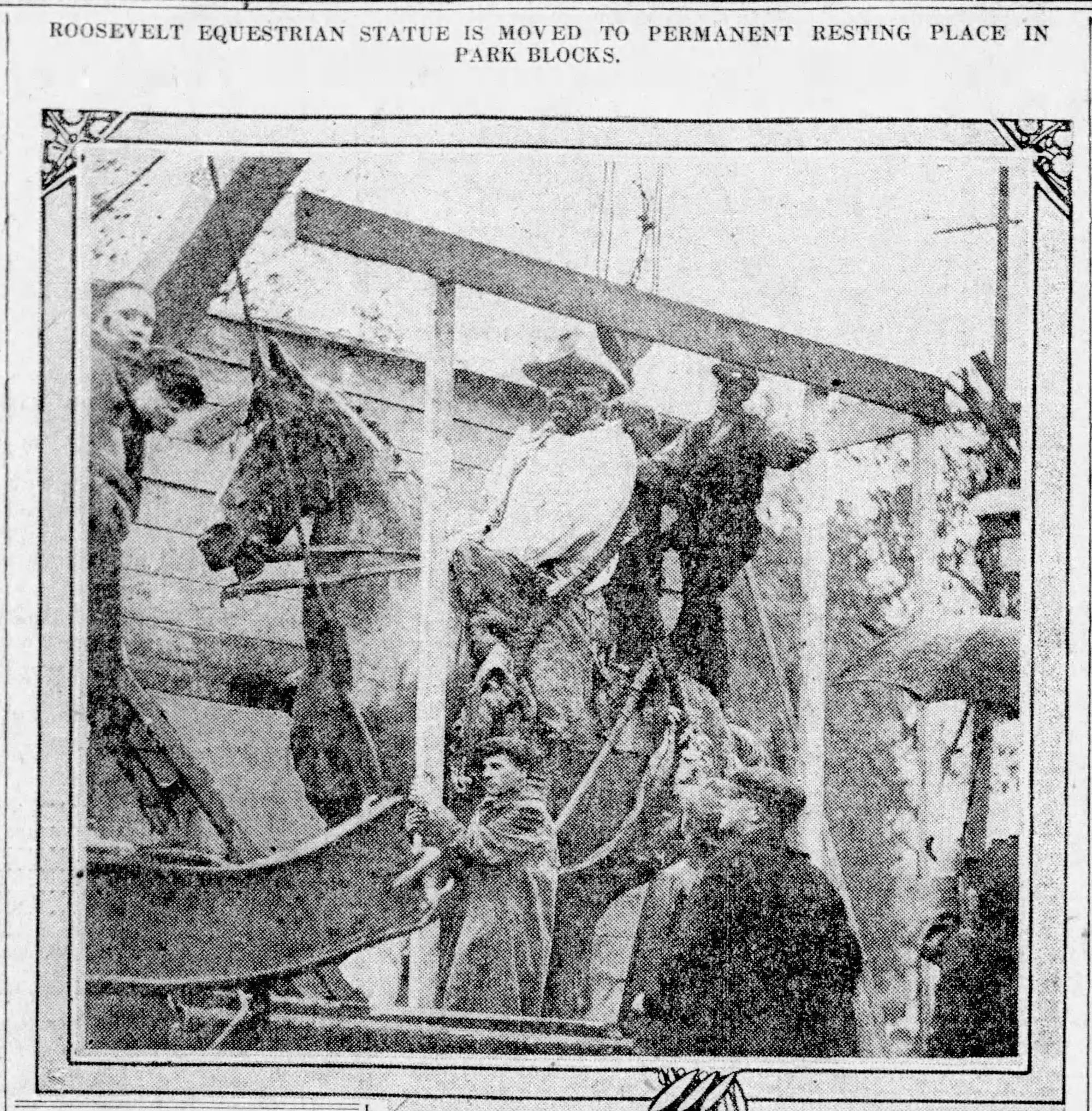
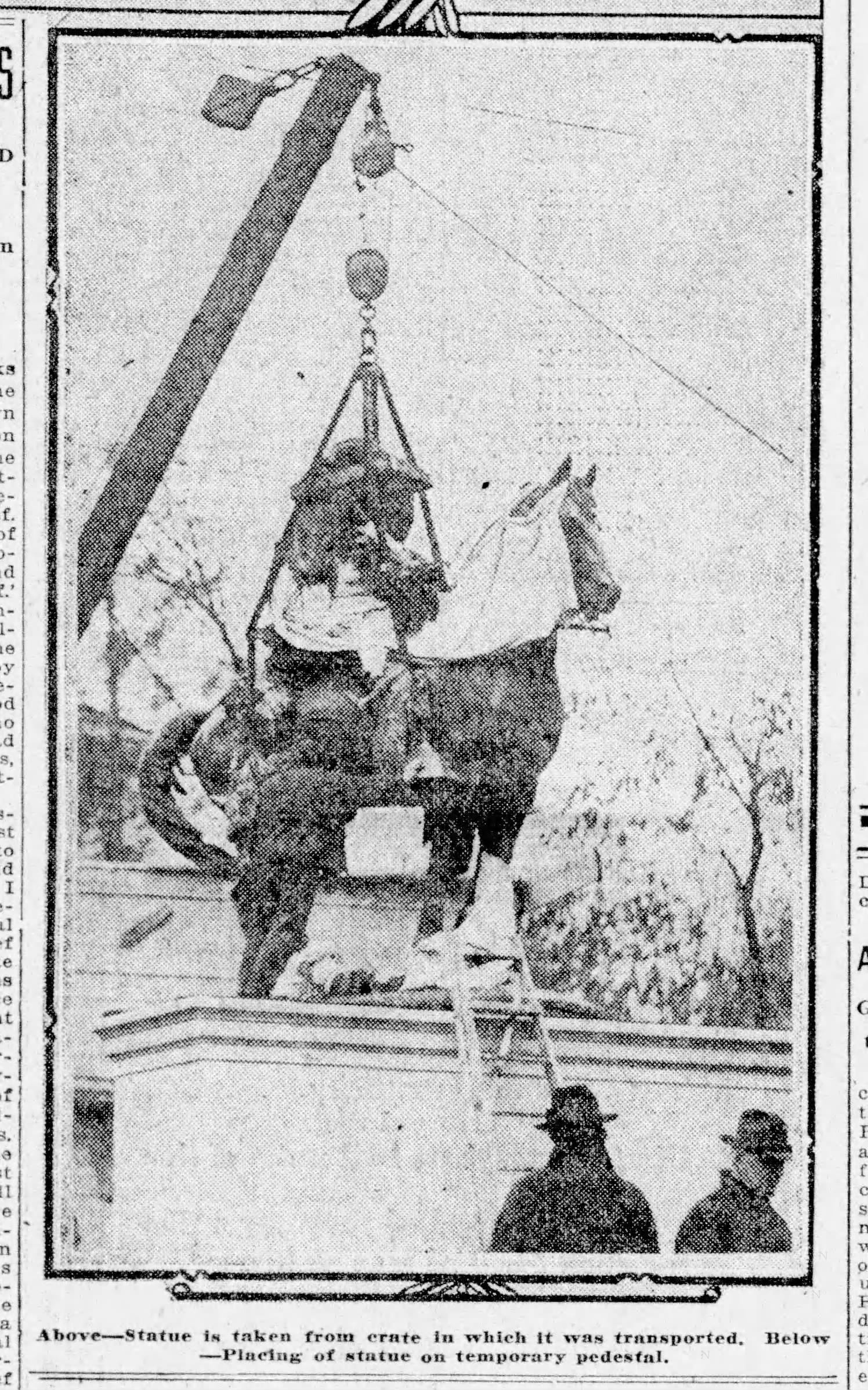
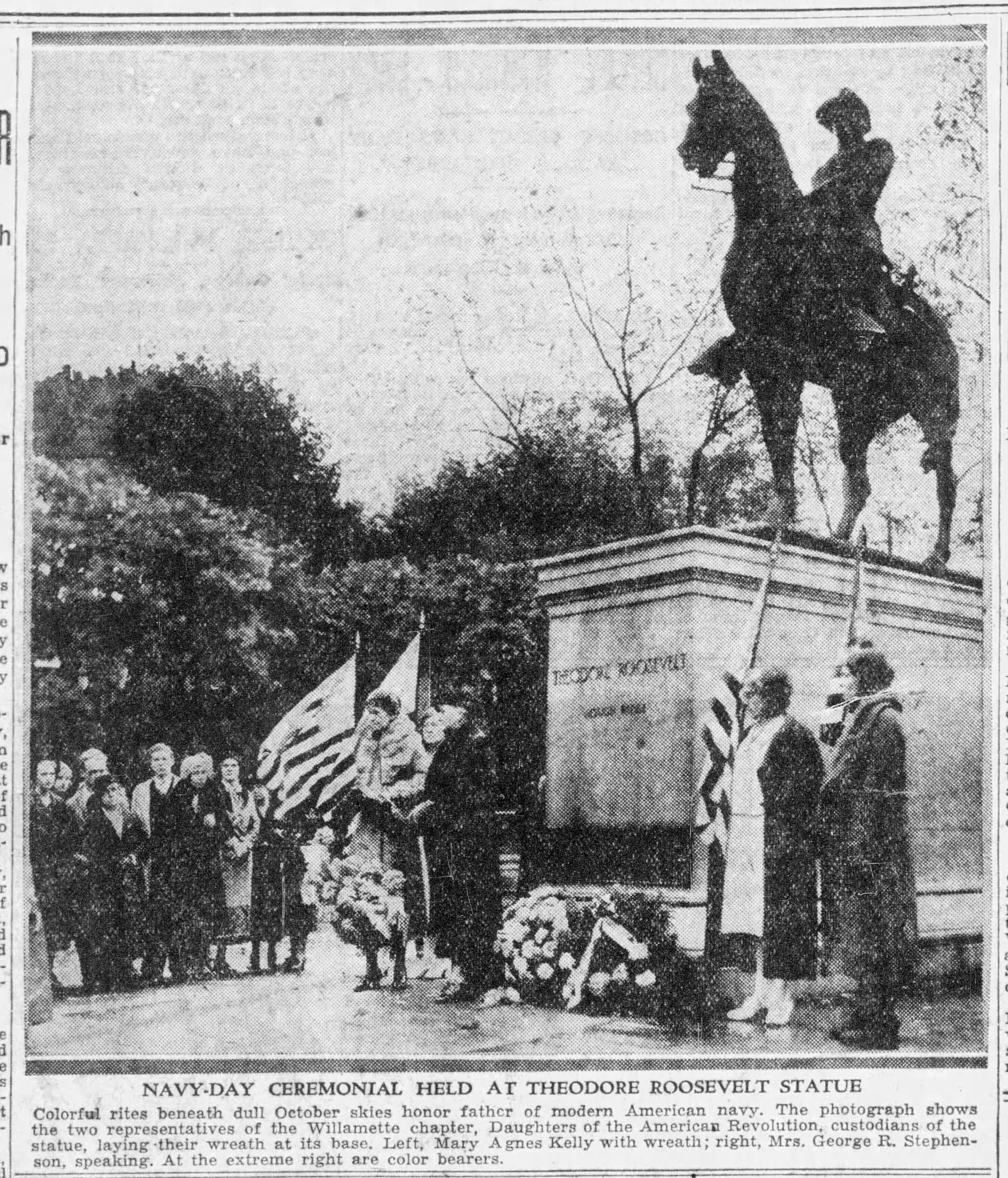
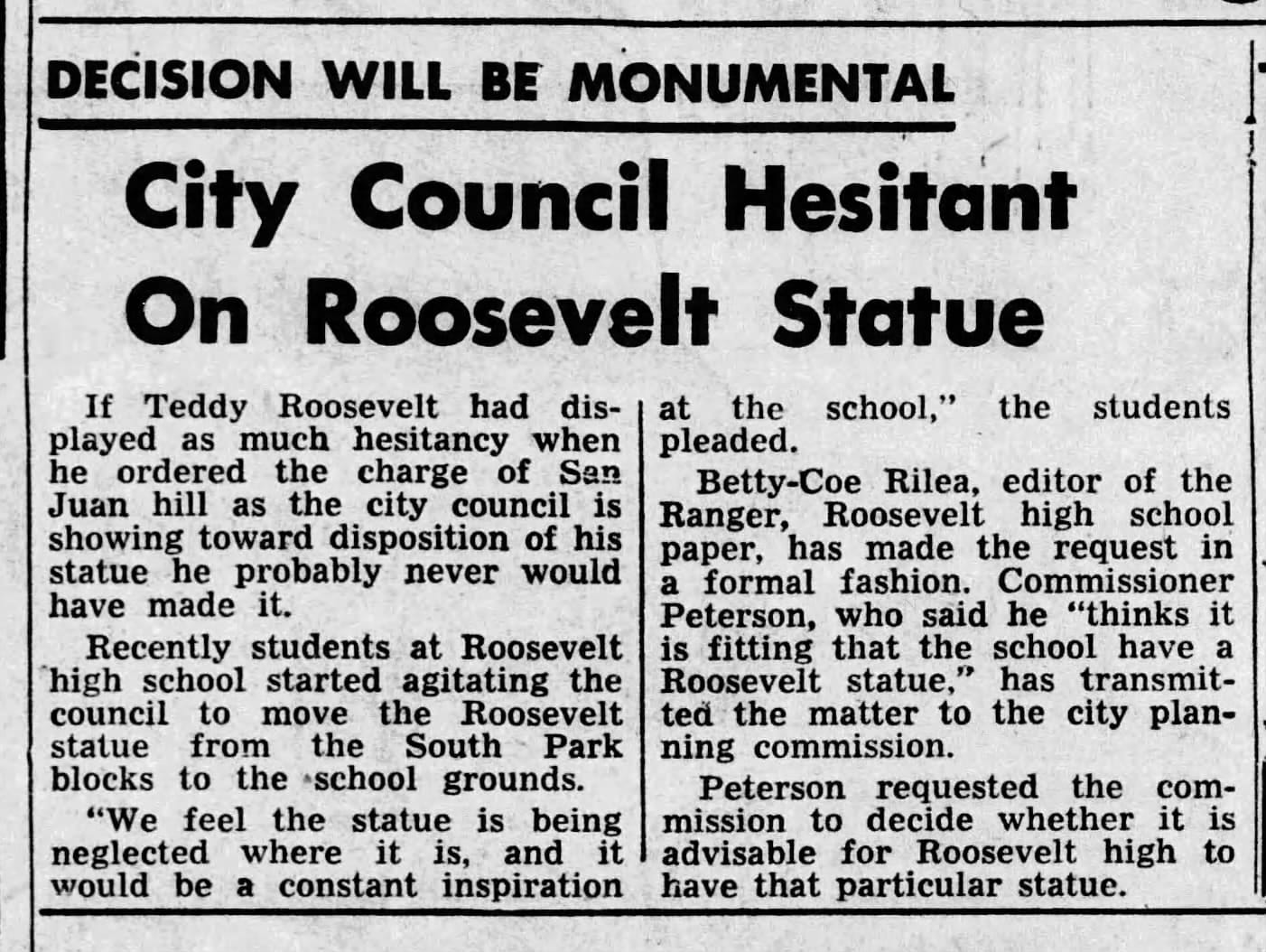
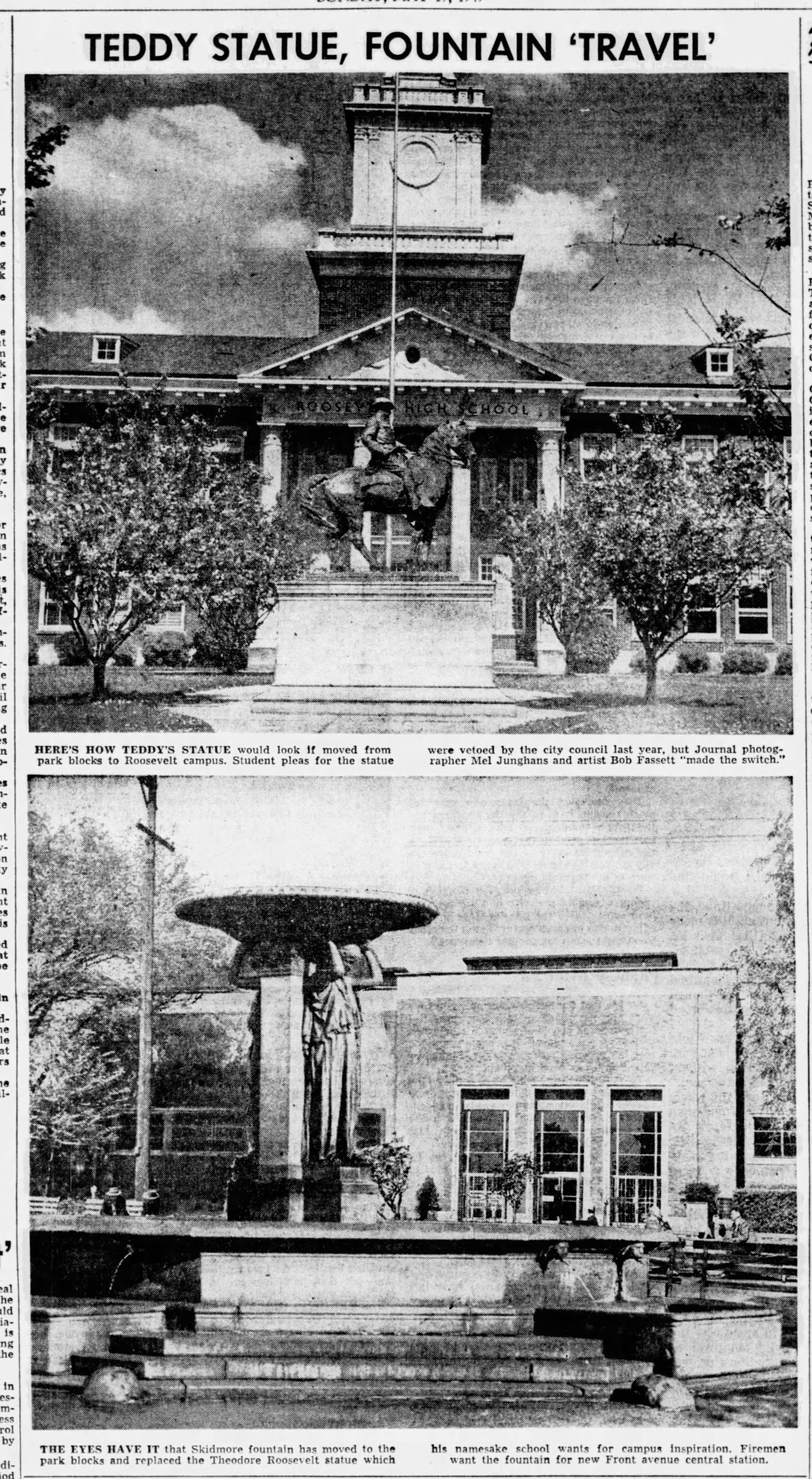
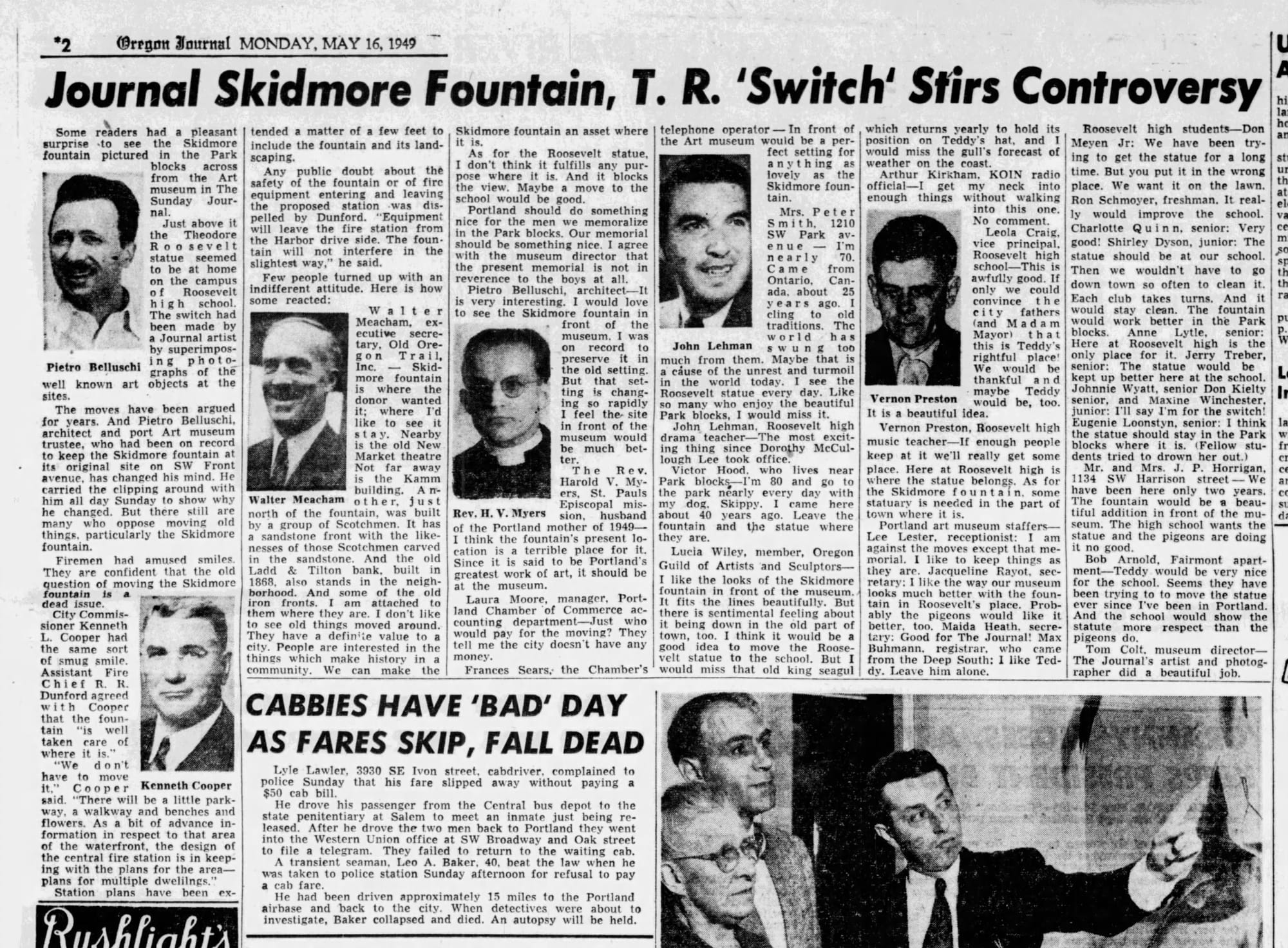
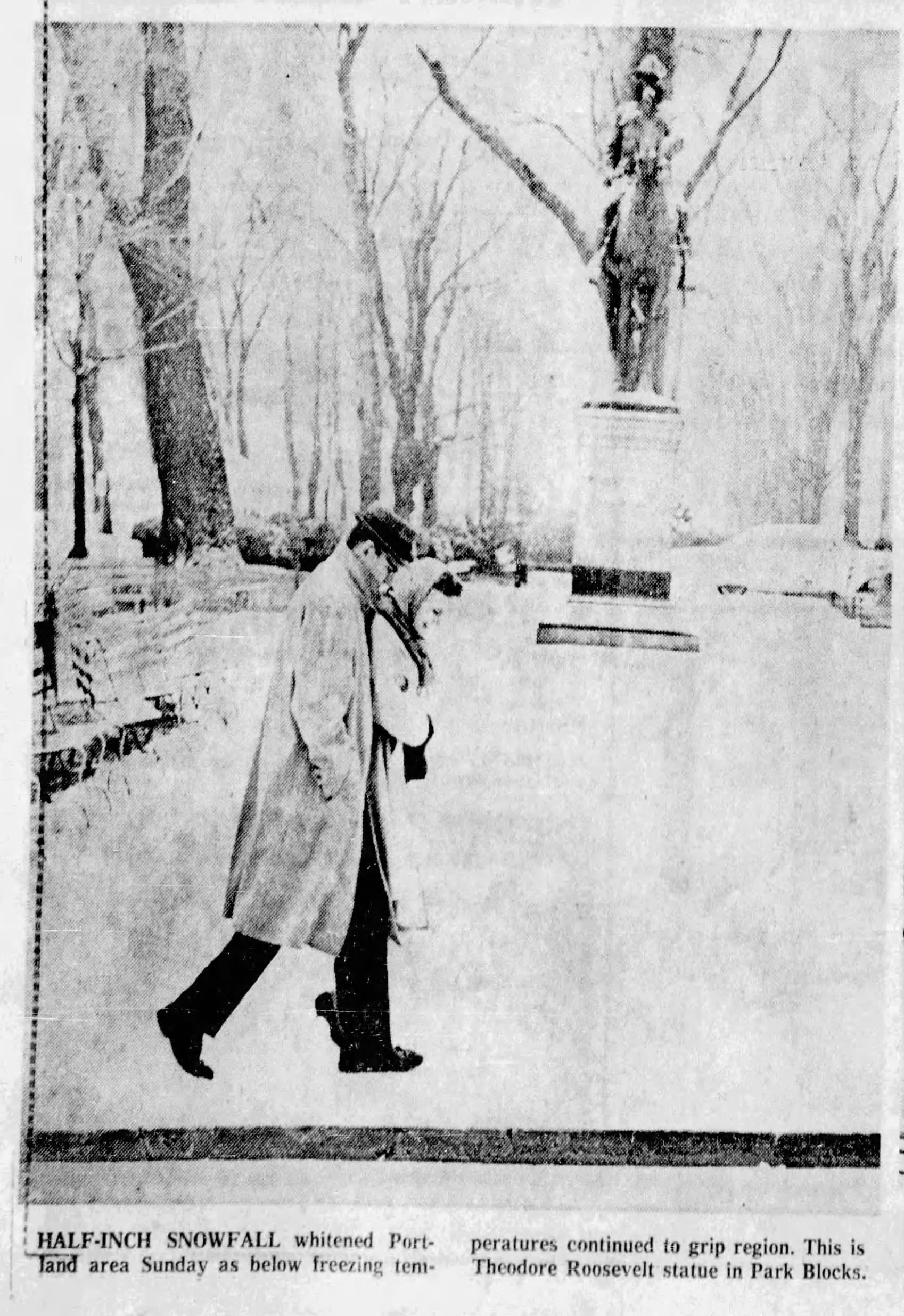
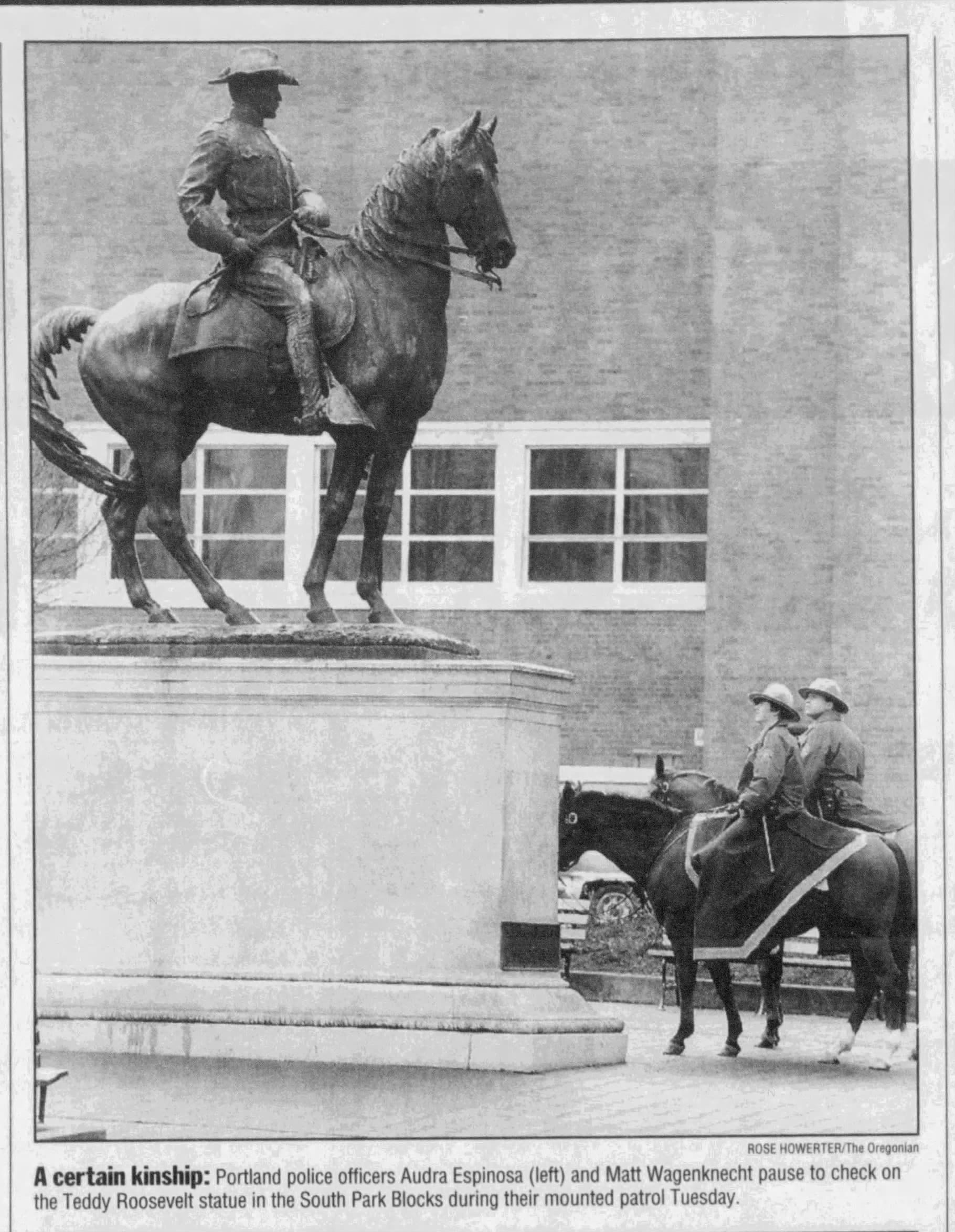
1922 photos of the installation | 1932 Navy Day celebration | 1948 and 1949 articles about the potential move of the statue | 1963 photo in the snowfall | 1996 photo with mounted cops
That obviously didn’t happen, so it still stood here on October 11th, 2020. Roosevelt’s creation of the US National Park system was a triumph, as was his aggressive approach to antitrust and workplace issues…but his legacy otherwise is much more mixed. When it comes to Native Americans, he was quoted, “I don't go so far as to think that the only good Indians are the dead Indians, but I believe nine out of every 10 are and I shouldn’t like to inquire too closely into the case of the 10th.”
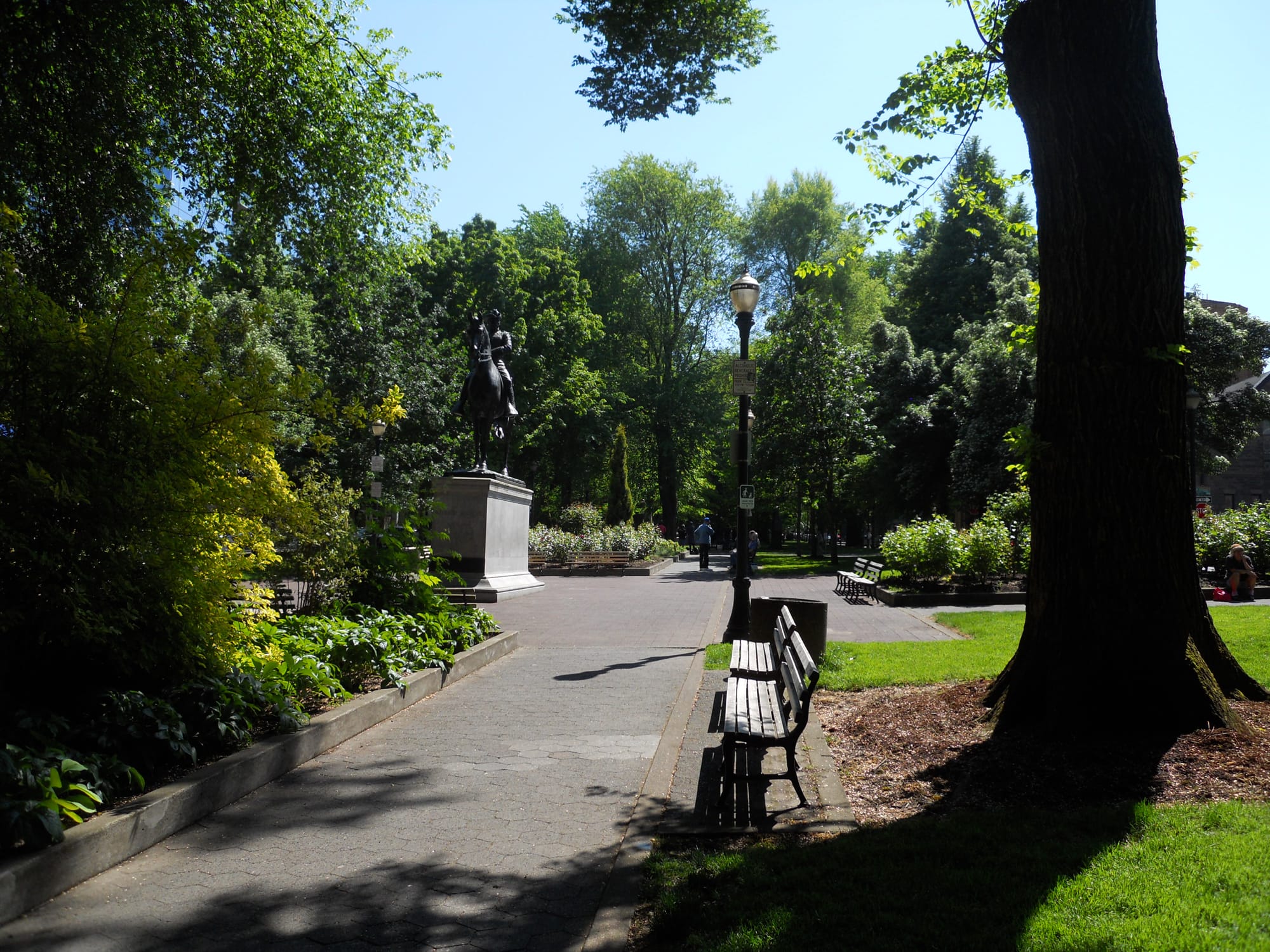
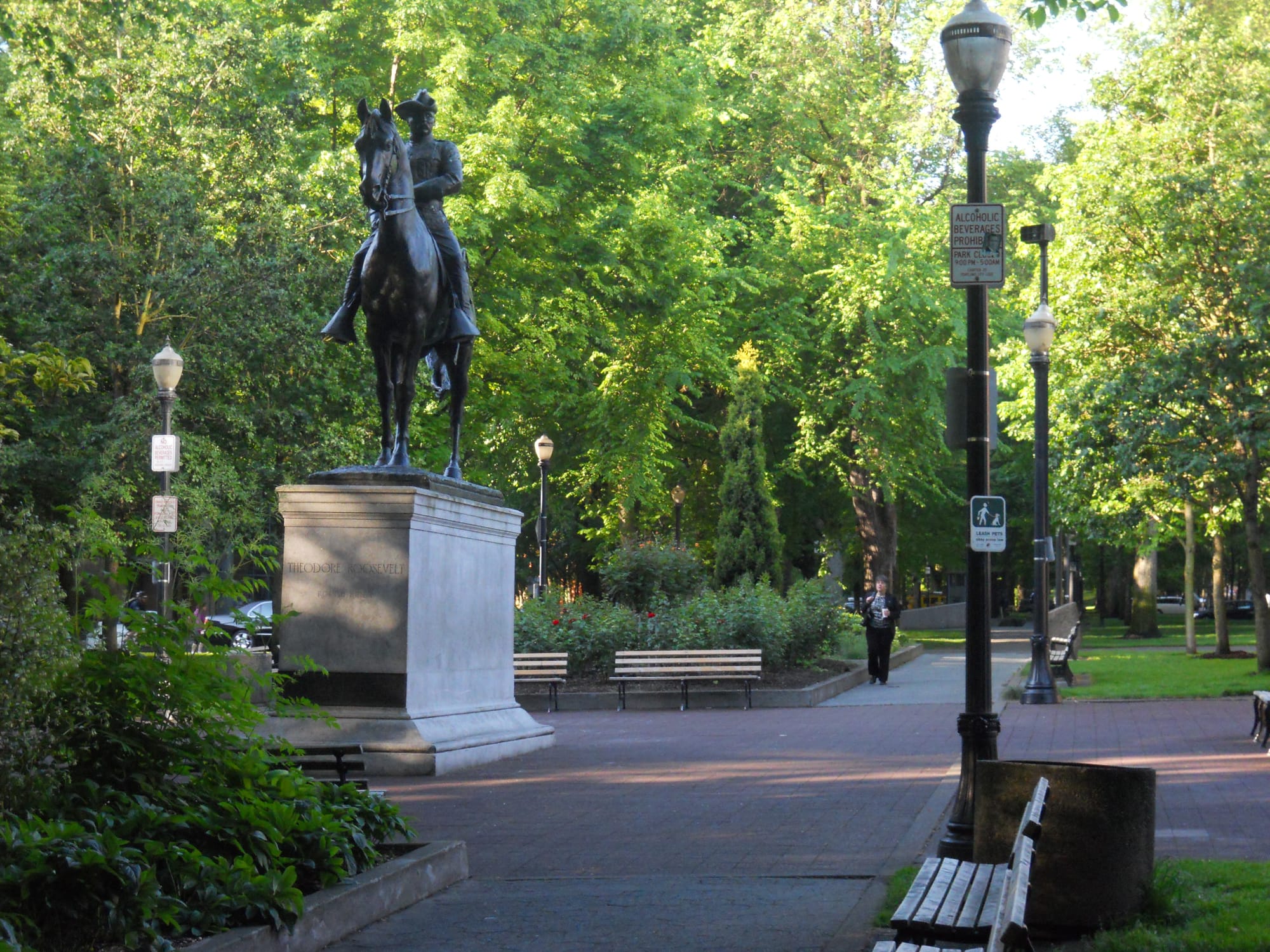
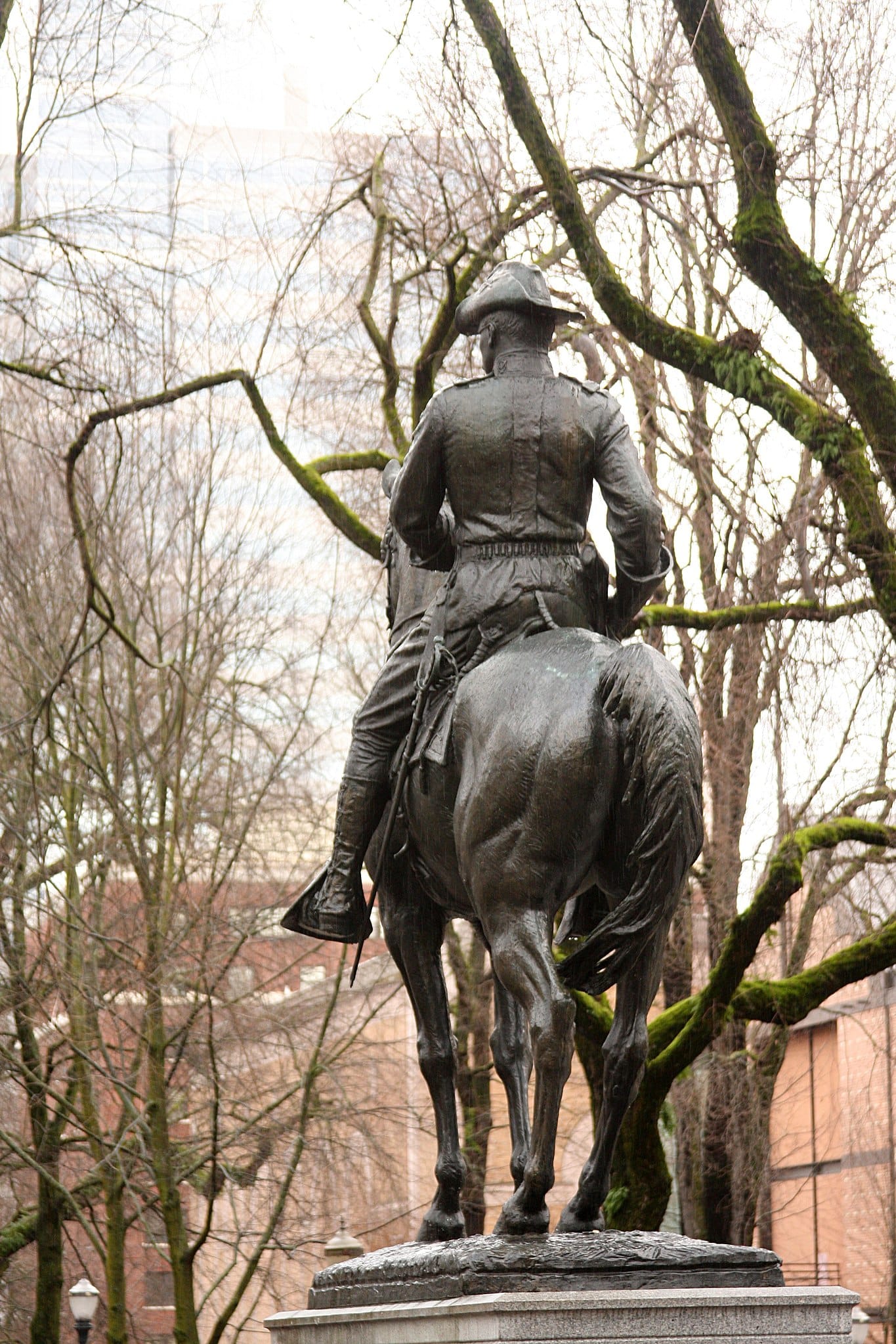
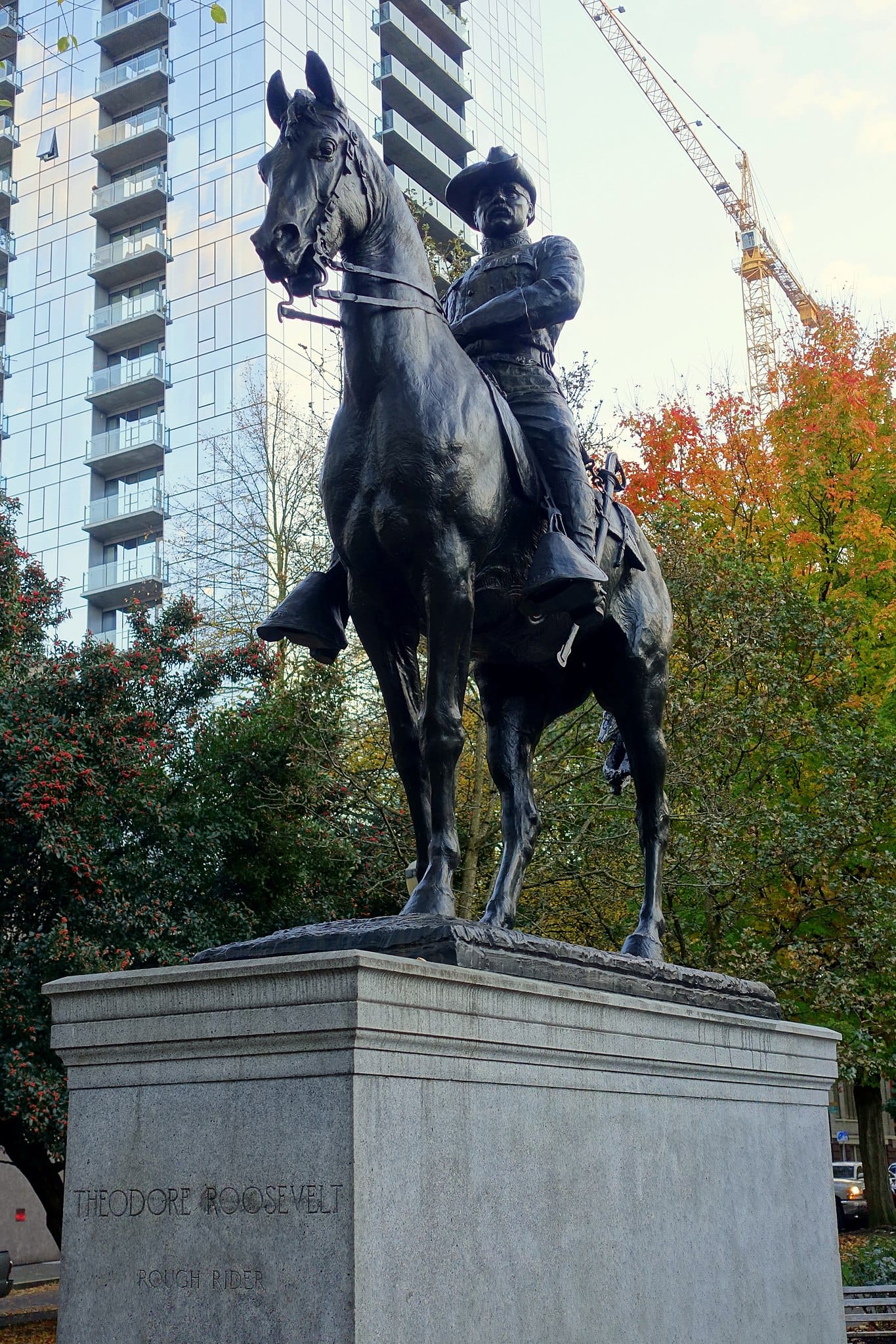
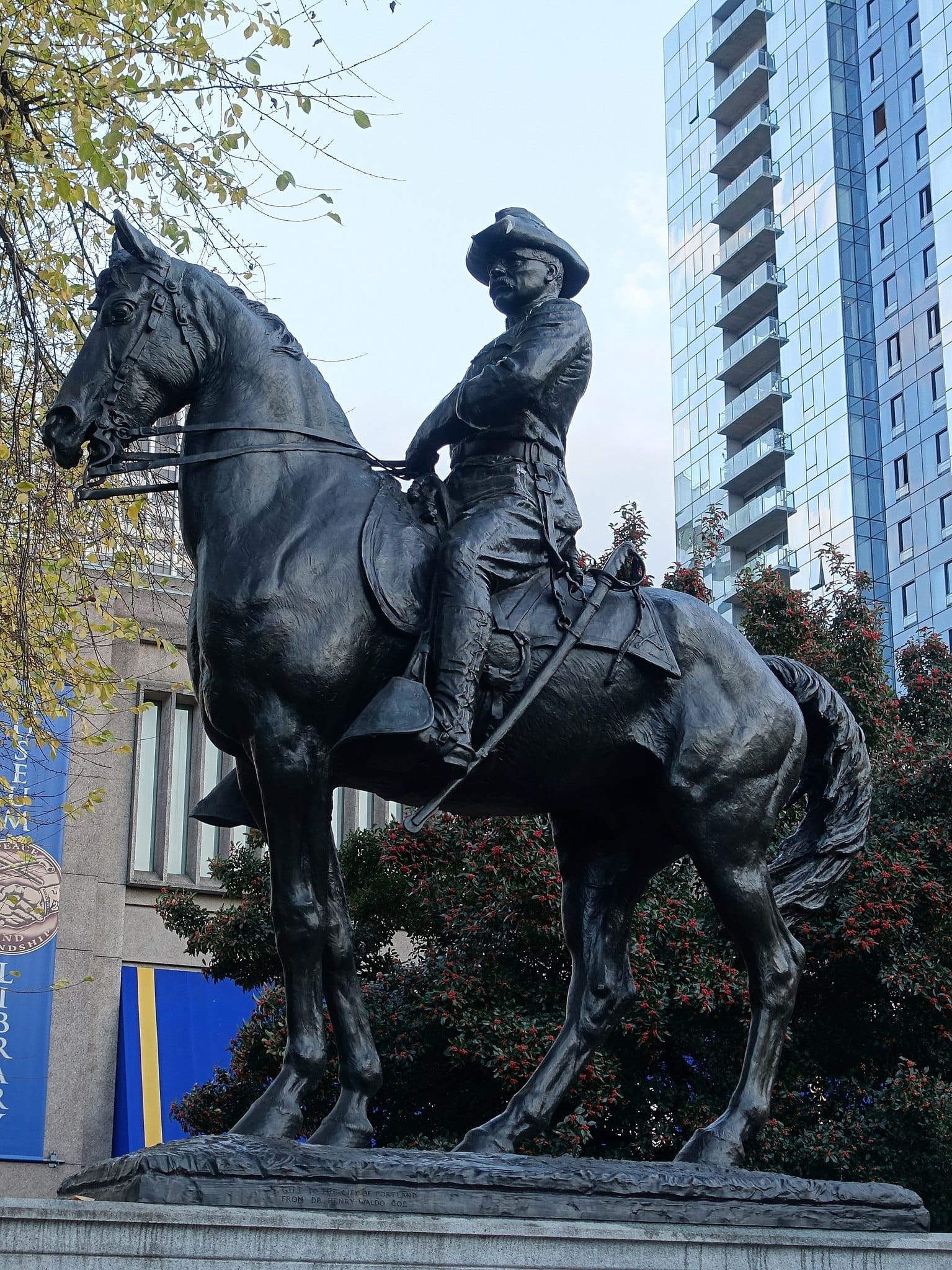
2008 photo, Portland City Auditor, Portland City Archives | 2008 photo, Portland City Auditor, Portland City Archives | 2009, Wikimedia Commons | 2017, Wikimedia Commons | 2017, Wikimedia Commons
…Yikes. When the small-but-aggressive Indigenous Peoples Day of Rage protest broke out, the Roosevelt equestrian statue was an obvious target. Protestors pulled it down, along with a statue of Abraham Lincoln. Together with monuments that were toppled earlier in the year, Theodore Roosevelt, Rough Rider is currently stored in a North Portland warehouse. Copies of the statue still stand in Mandan and Minot, North Dakota, as well as Oyster Bay, New York, and–most recently–San Antonio.
The empty plinth has become a demonstration site and a place for art–amongst others, Choctaw/Cherokee artist Jeffrey Gibson had indigenous people pose for portraits on the empty pedestals as part of a photography project for a Portland Art Museum exhibition in 2022.
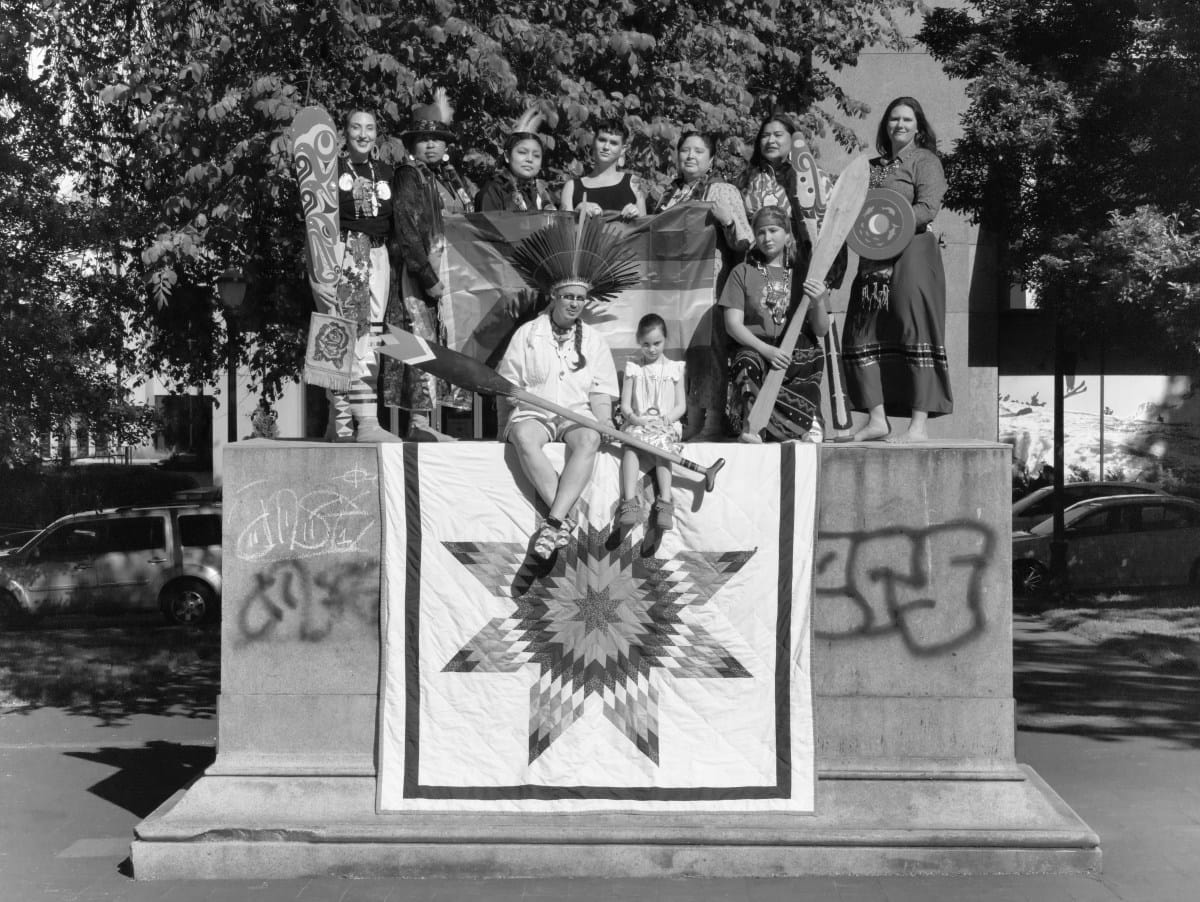
Production Files
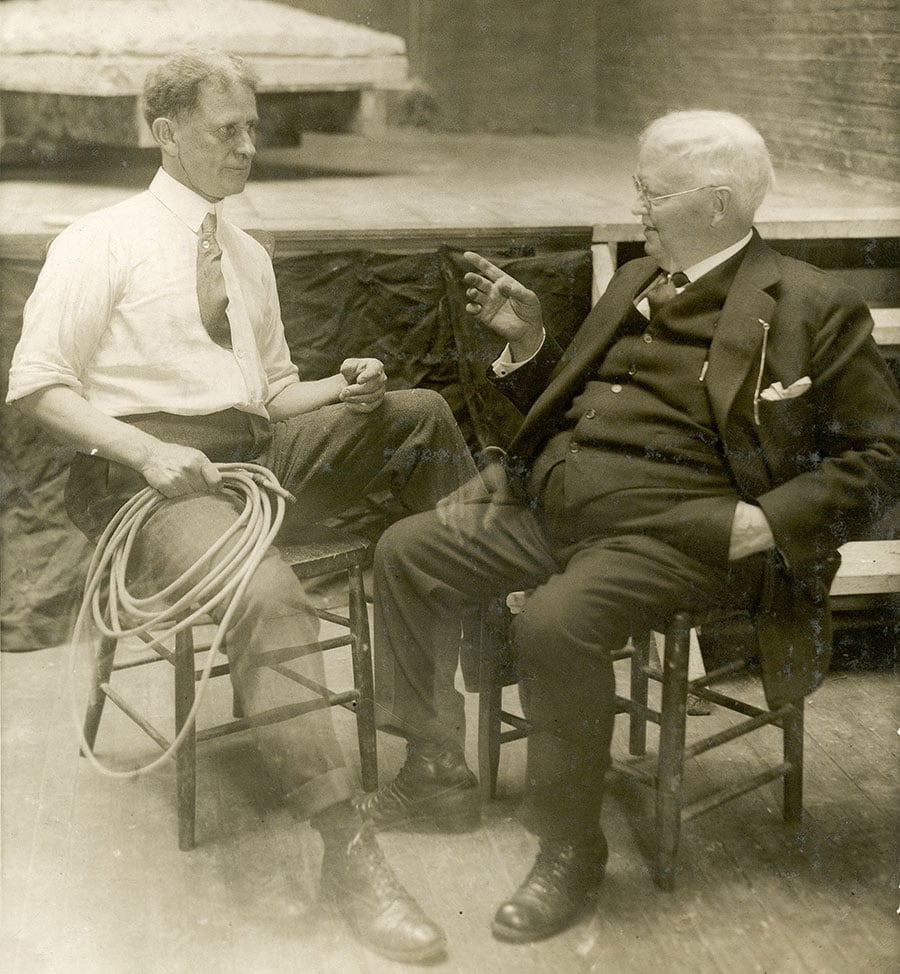

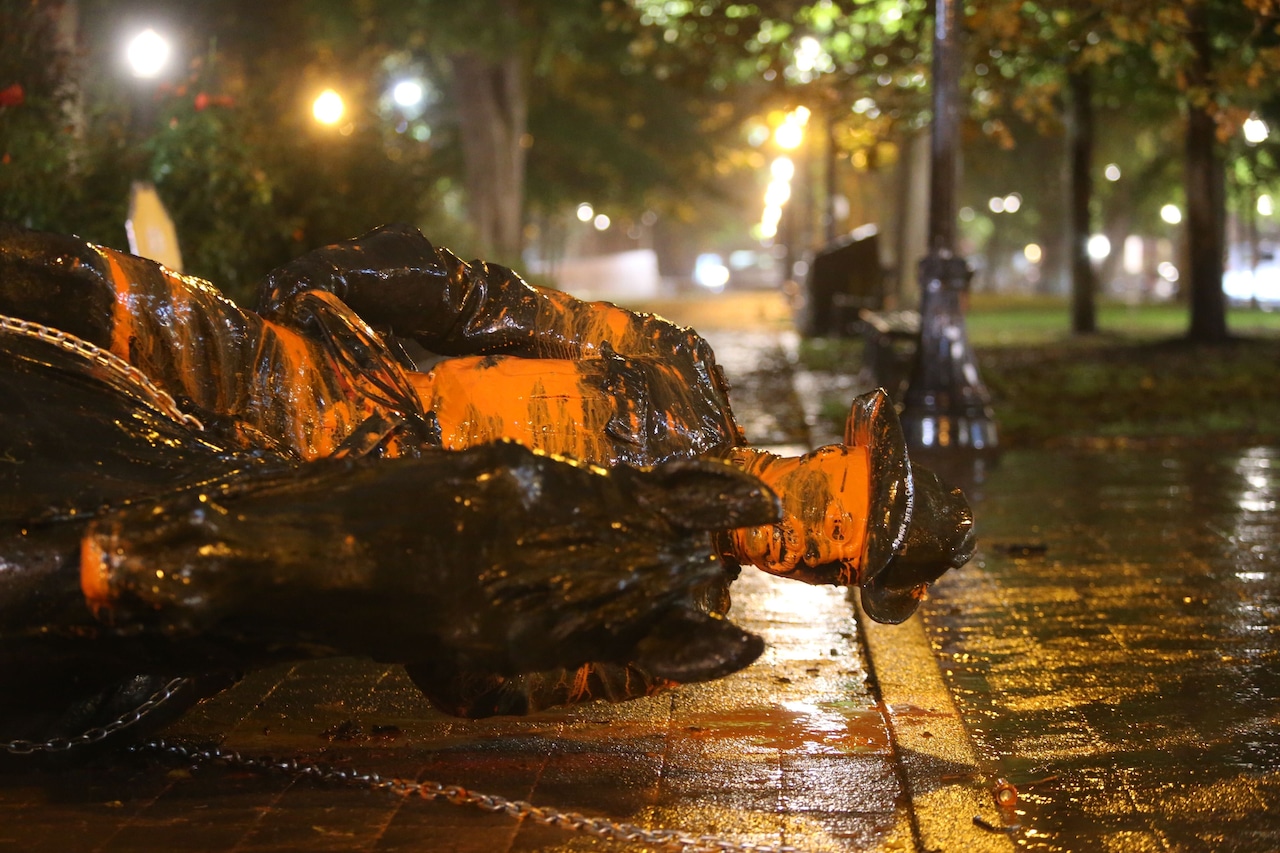
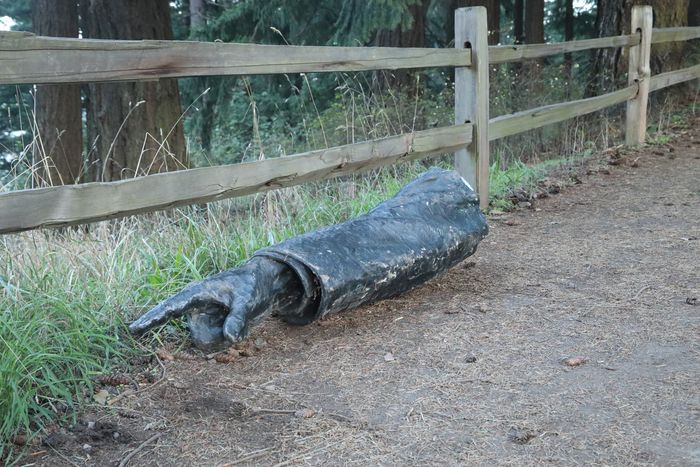
.jpg)
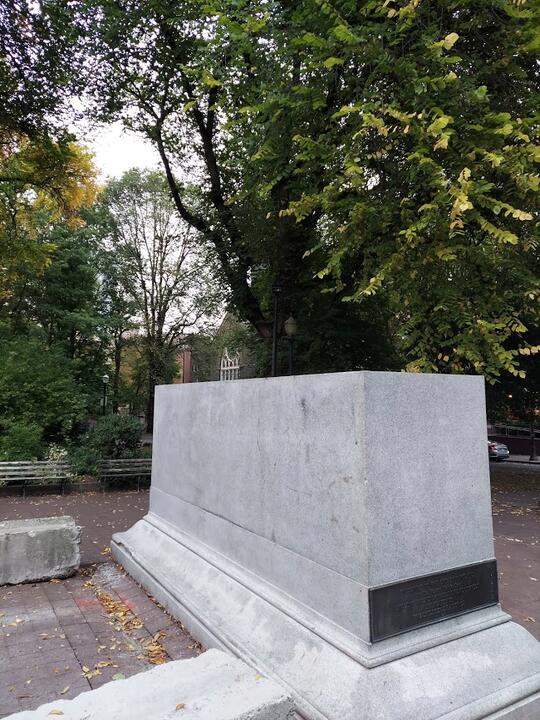
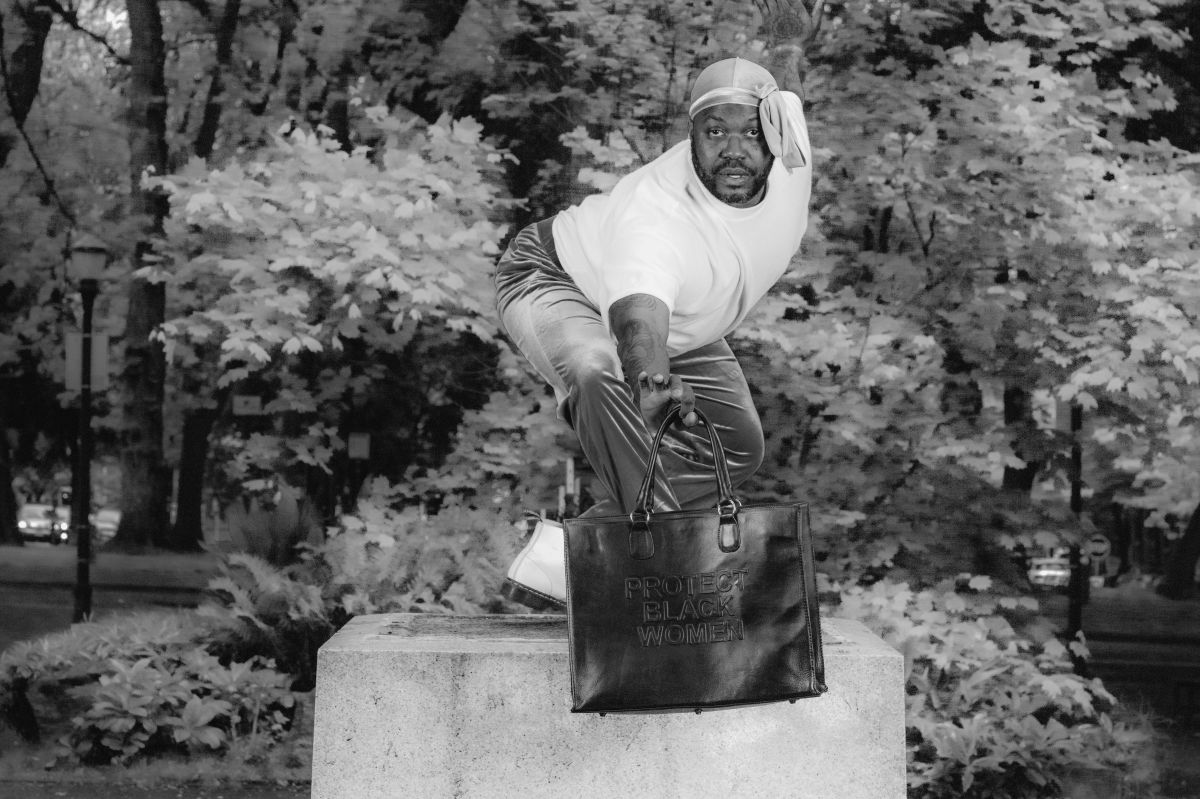
Wait this is fun, the postcard is lie—they turned the statue around, Roosevelt is facing the wrong way. Why? Aesthetics, I guess—they didn't want the brick of the Portland Art Museum in the background.
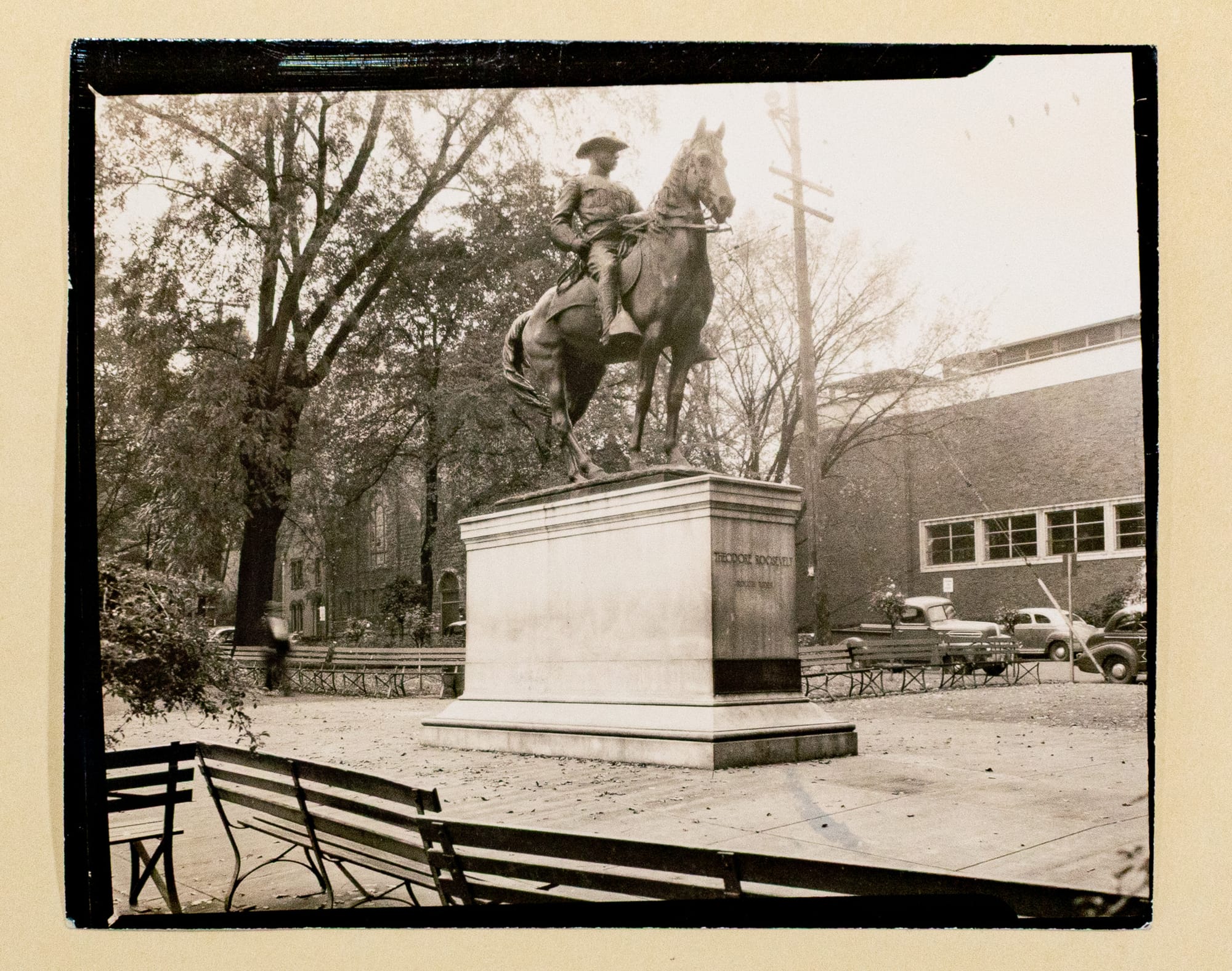
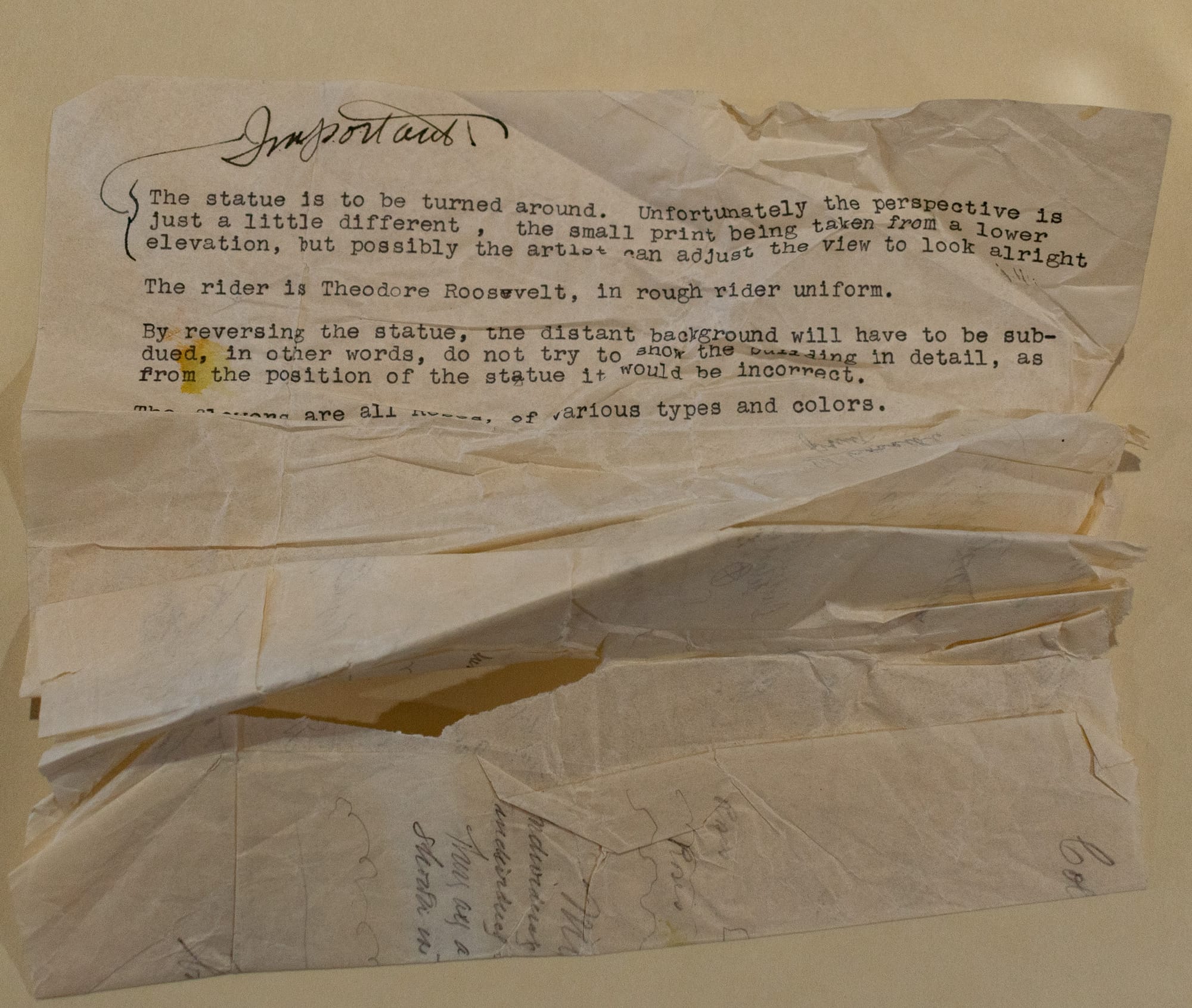
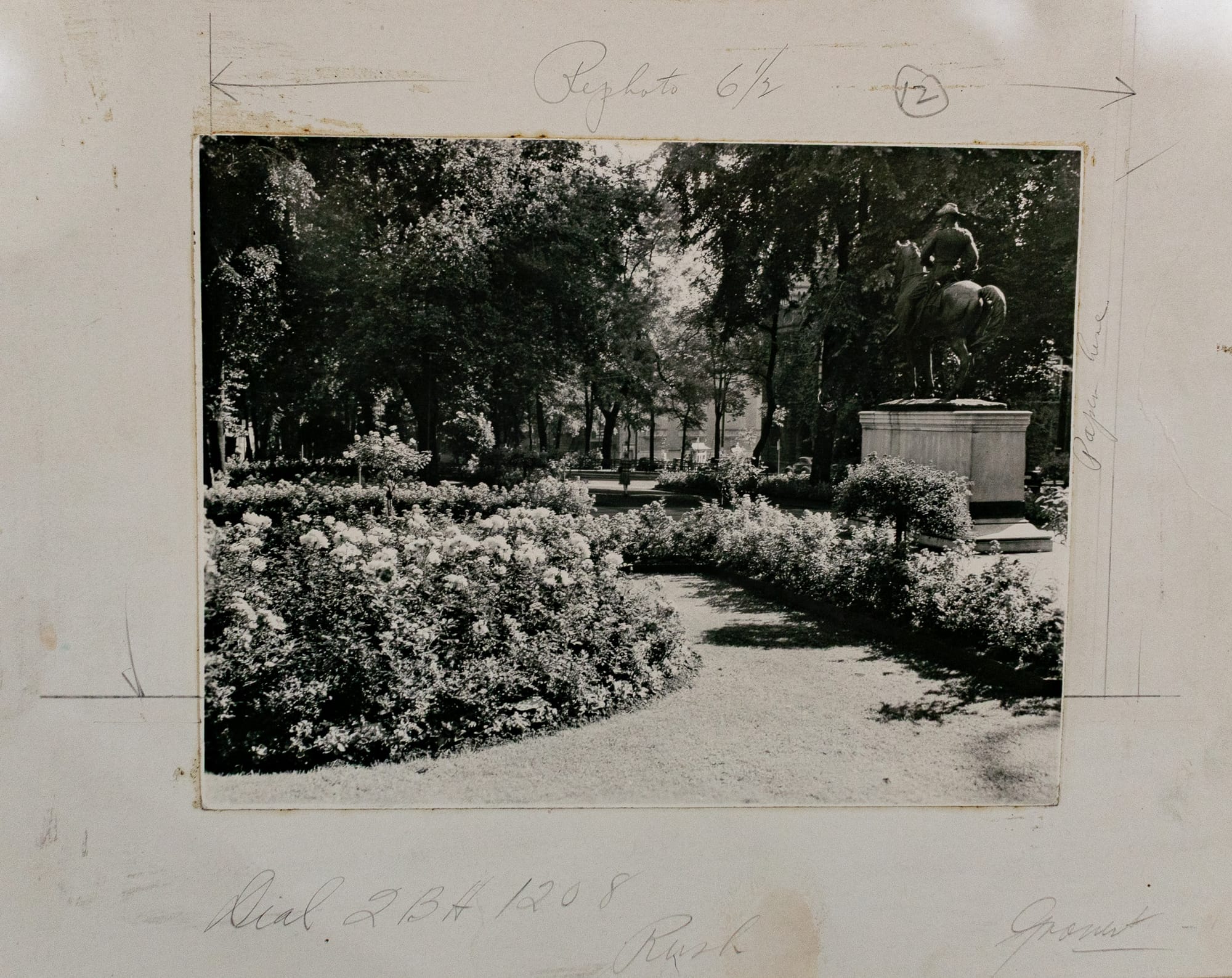
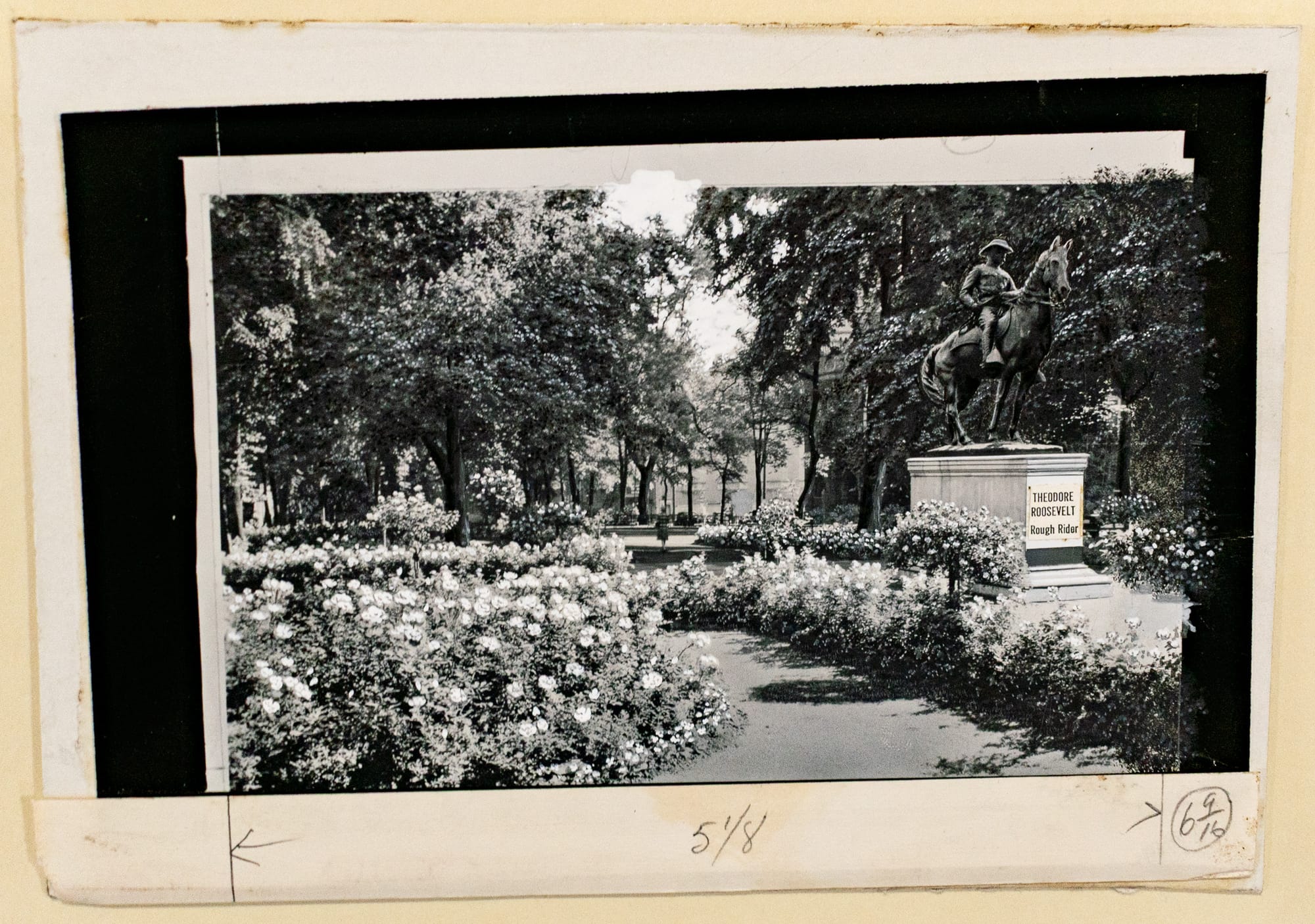
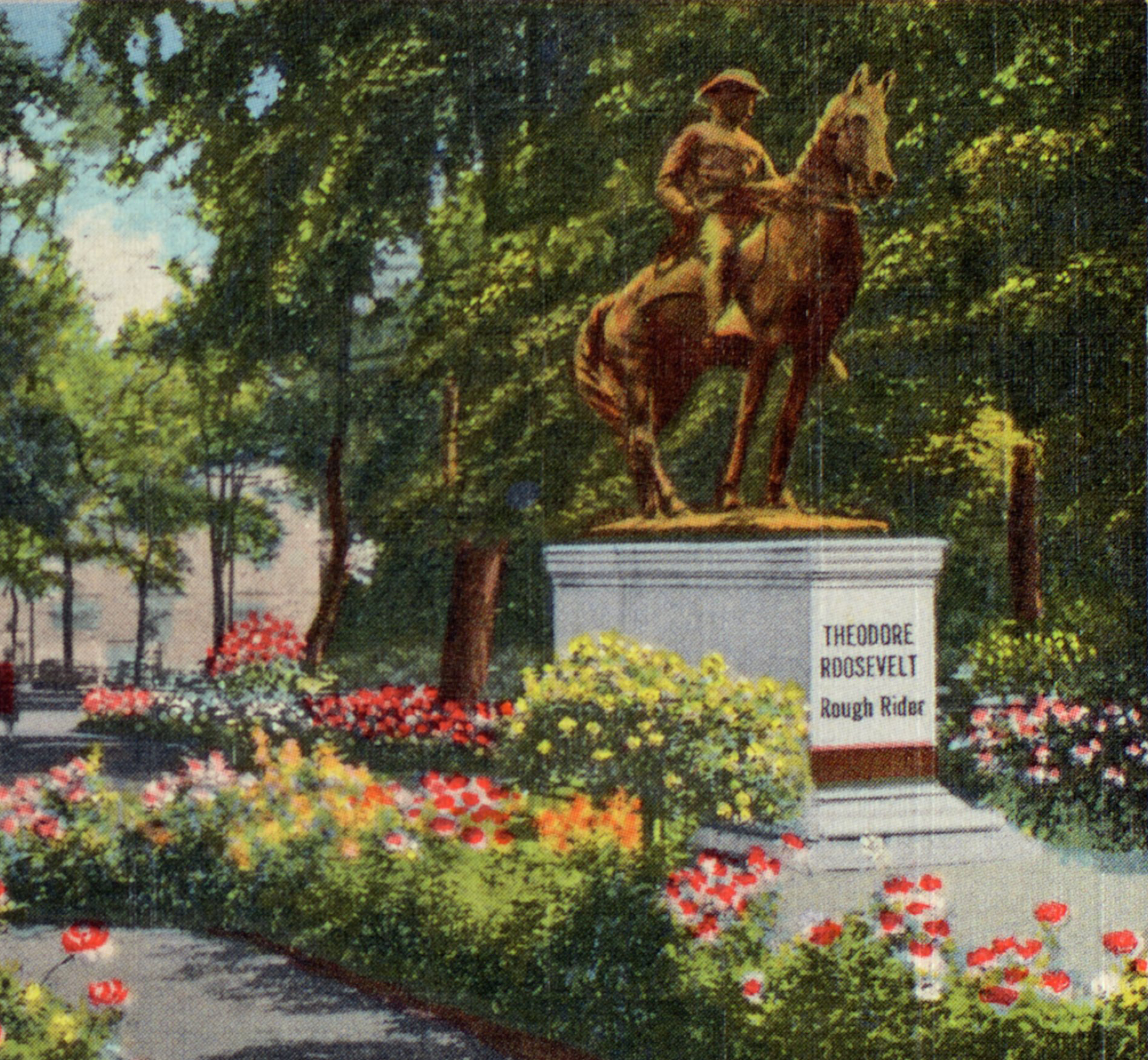
Also a lot of instructions about the color and types of flowers on the tracing paper.
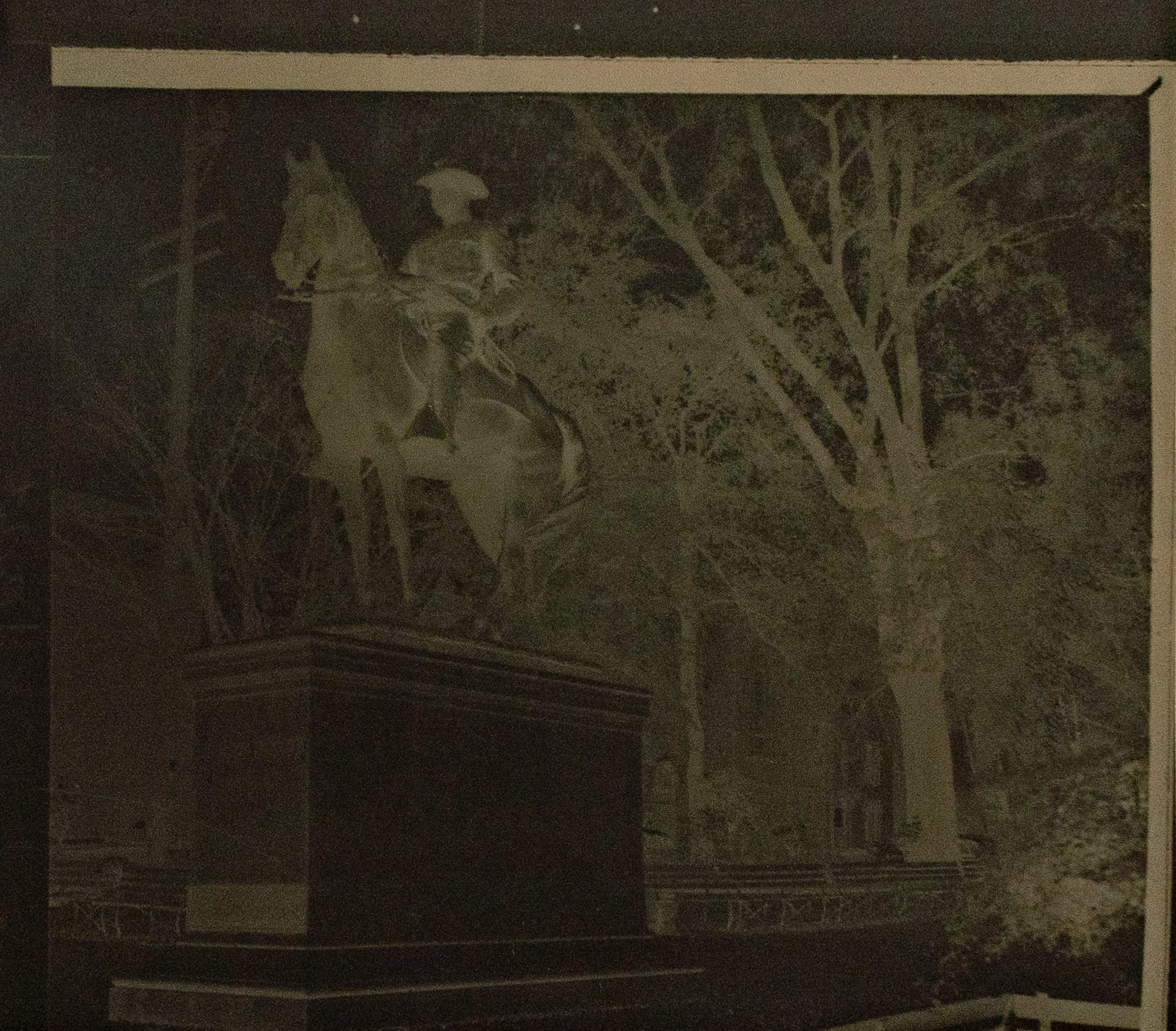
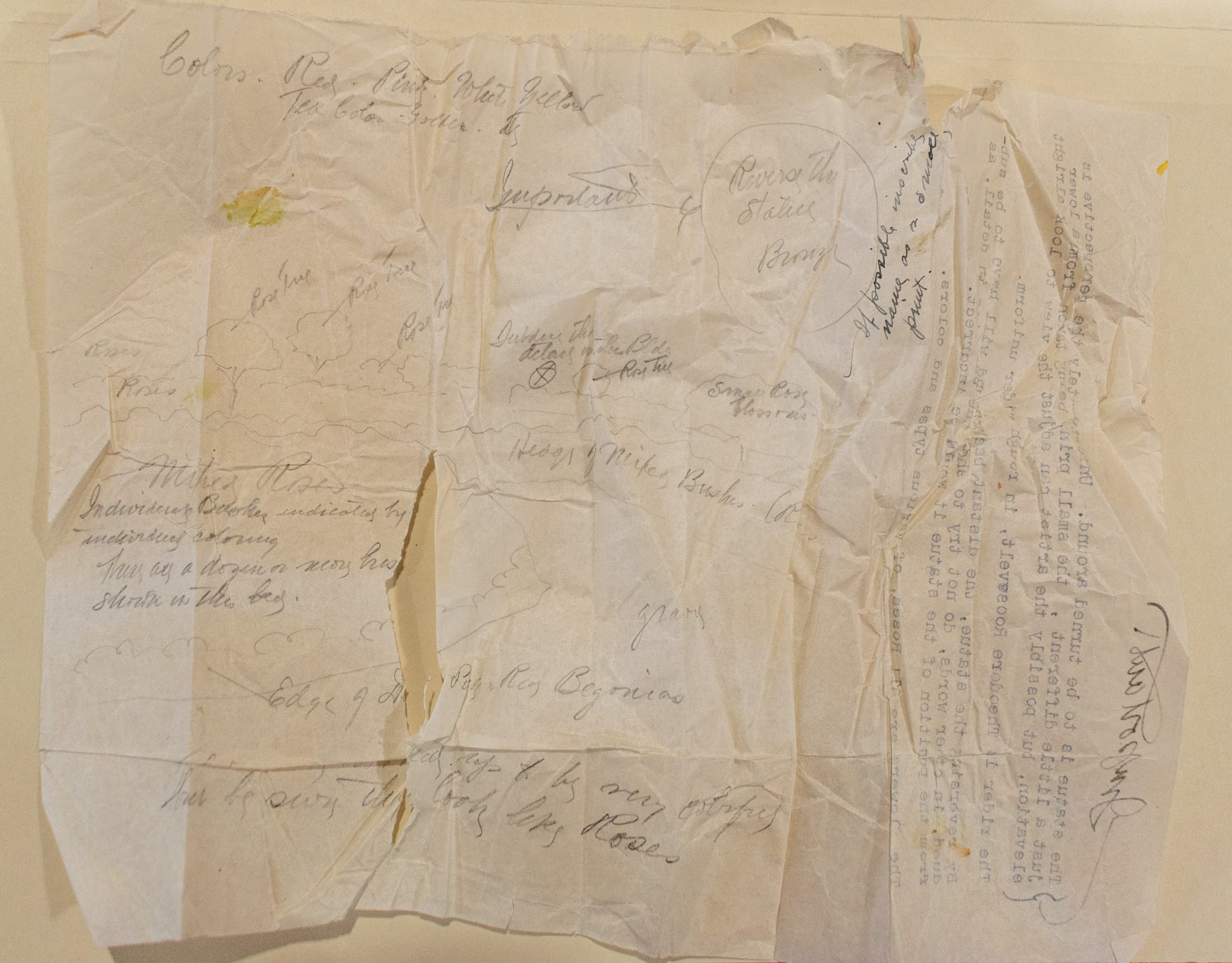
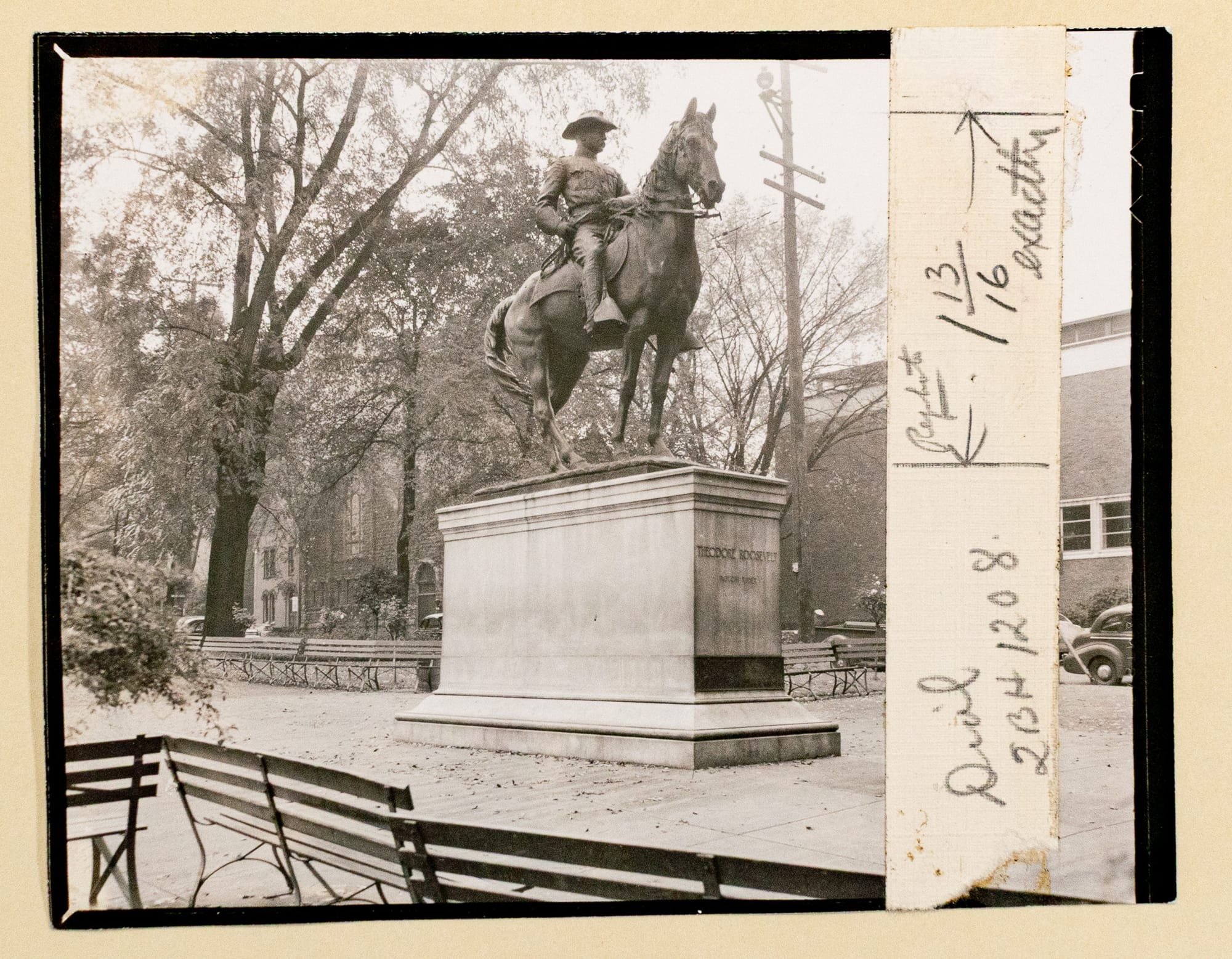
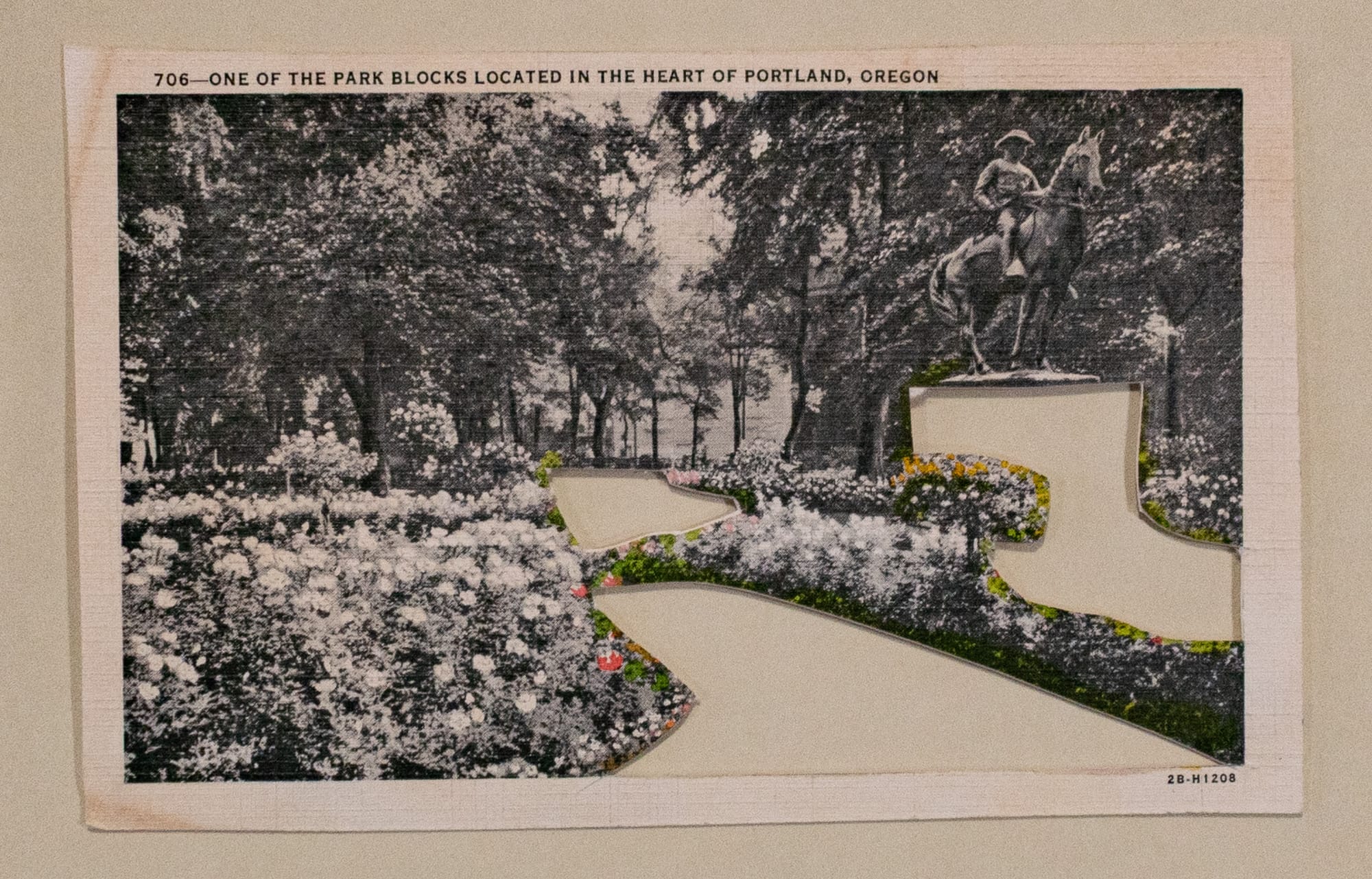
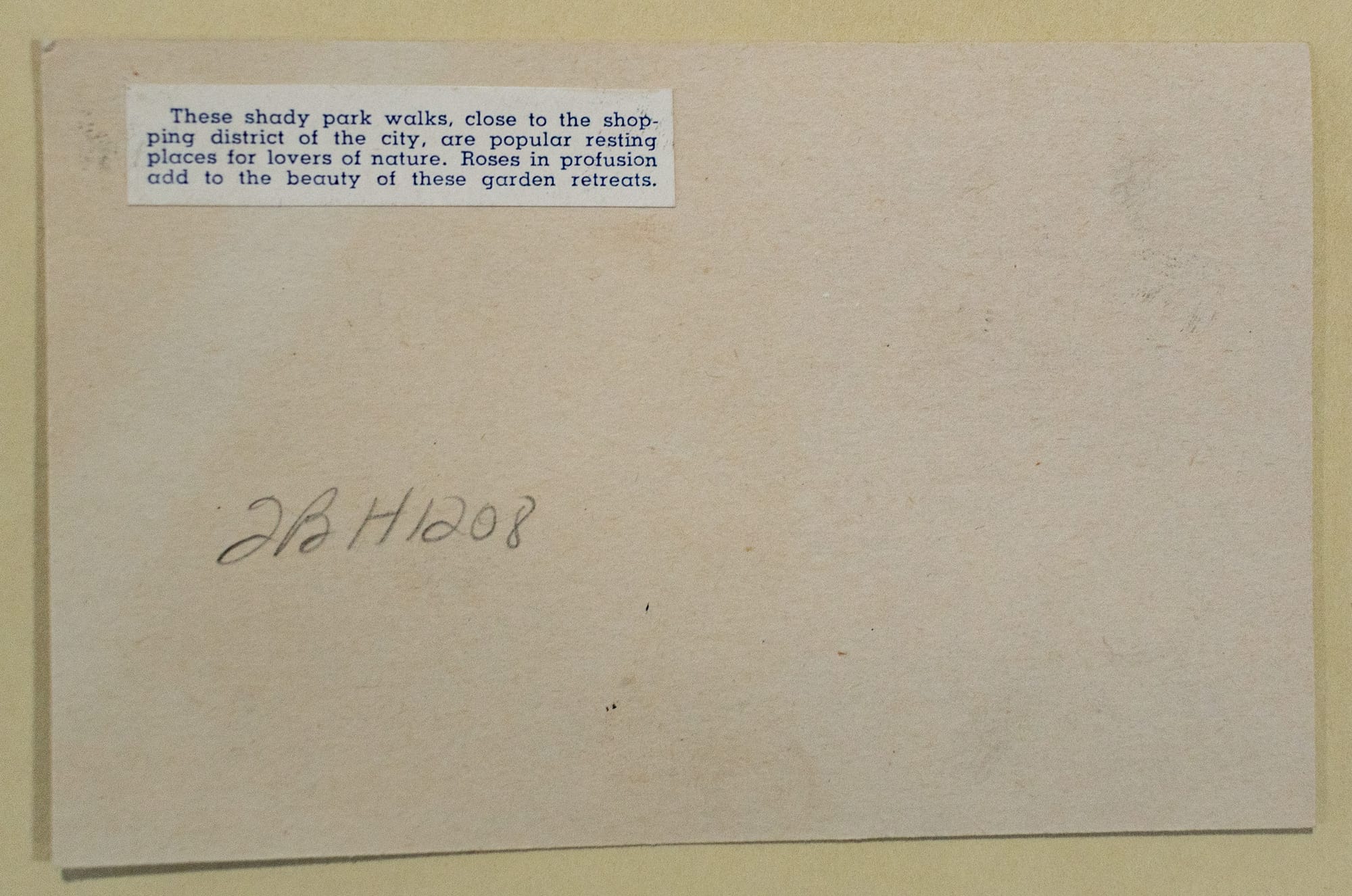
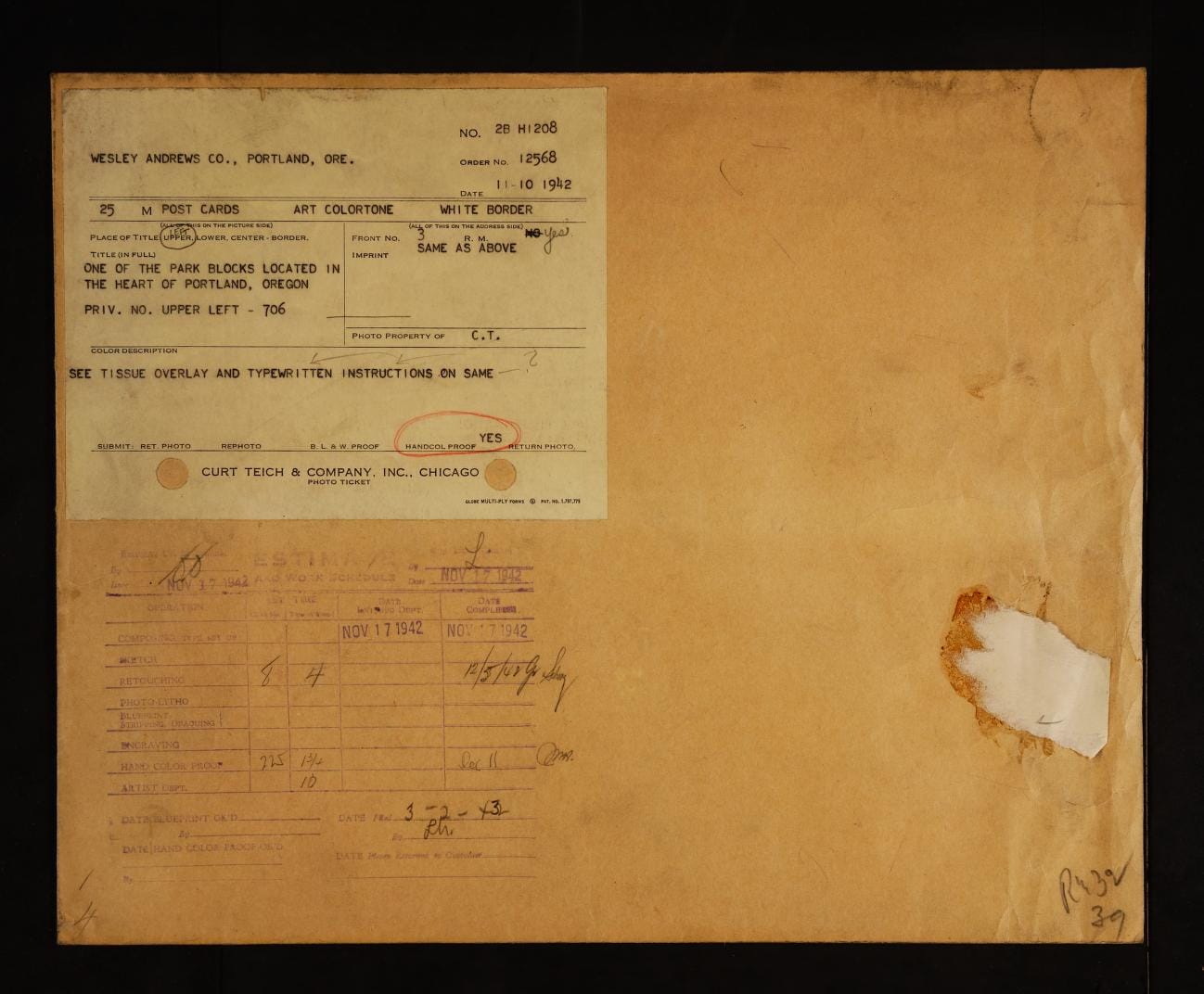

The hunt for a site took years, with at least a couple twists and turns.
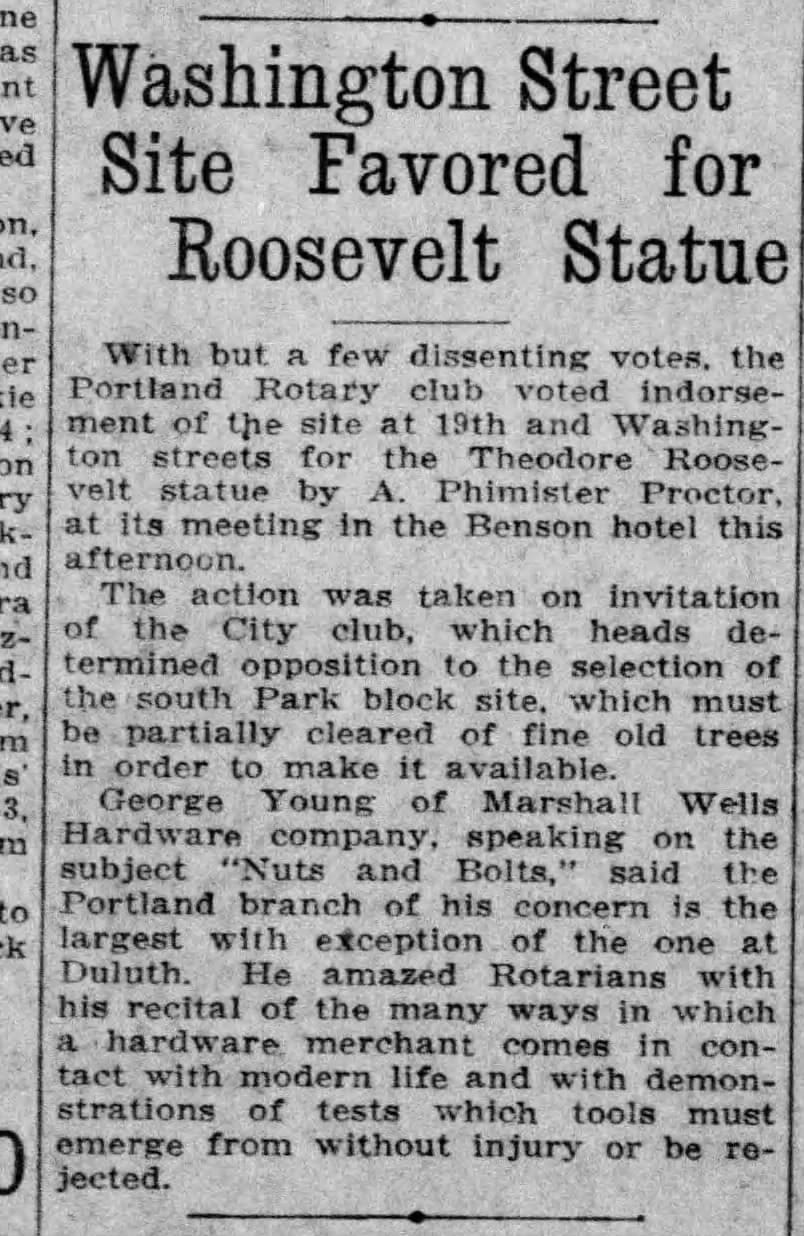
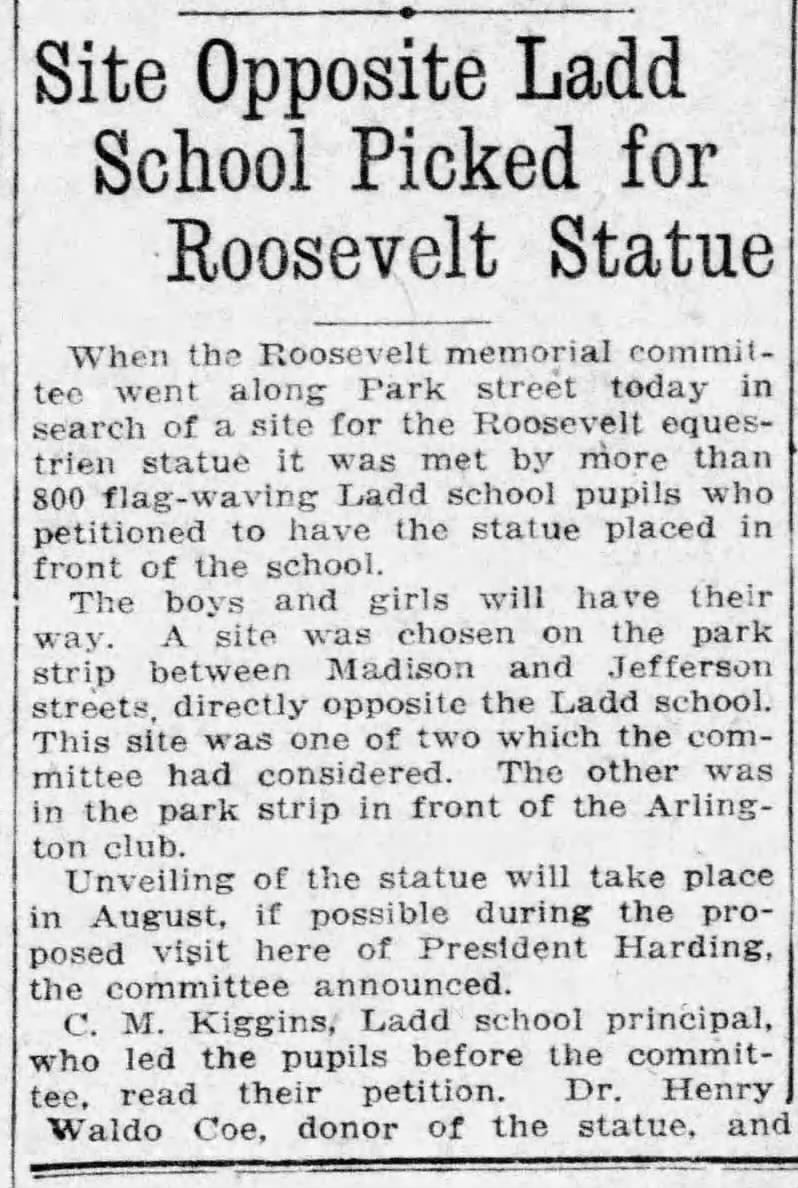


Proctor's sculpture was not universally loved.
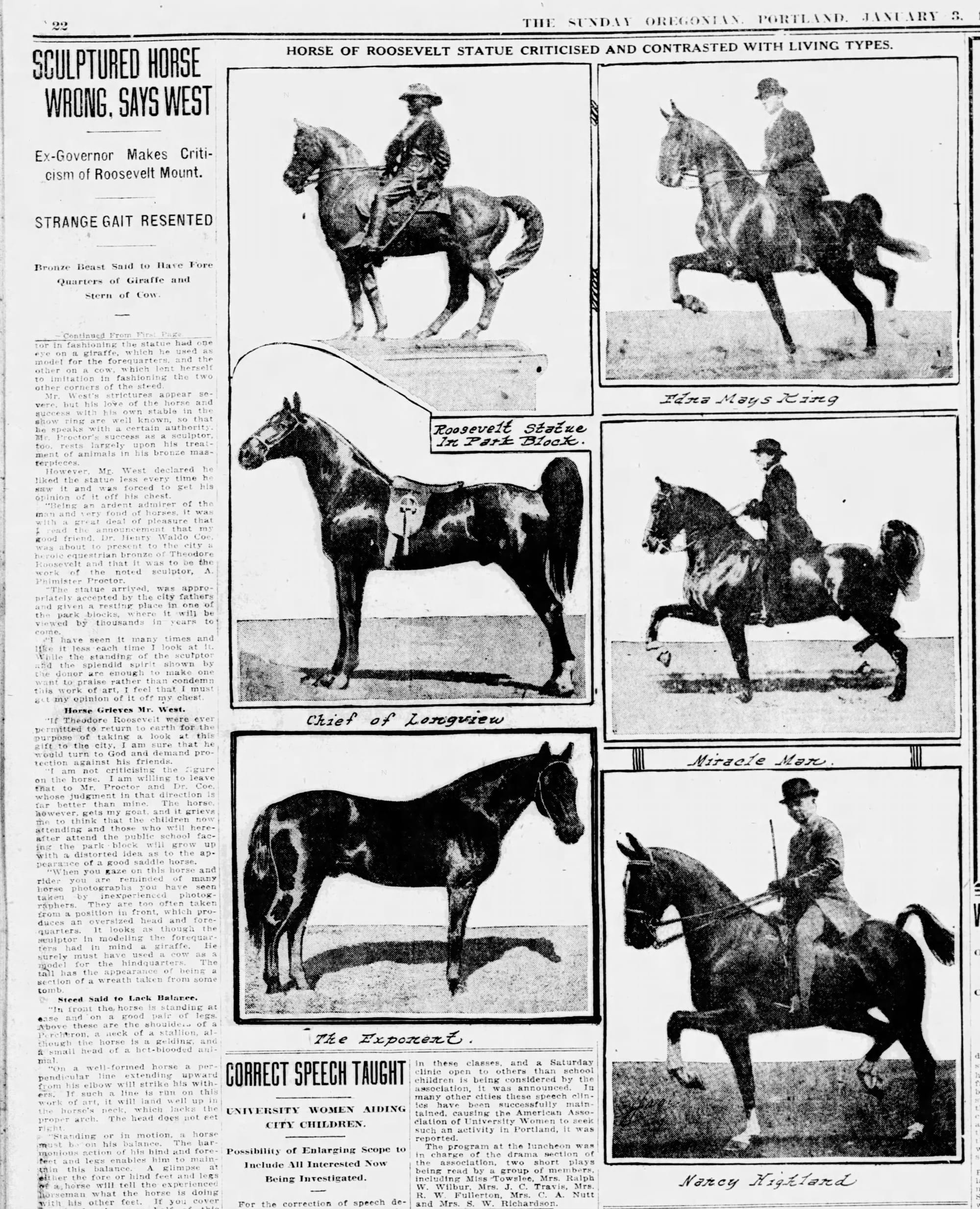
Gozo Kawamura seems like an interesting figure–a Japanese artist in New York, working with all these other boring sculptors, making cows, etc.
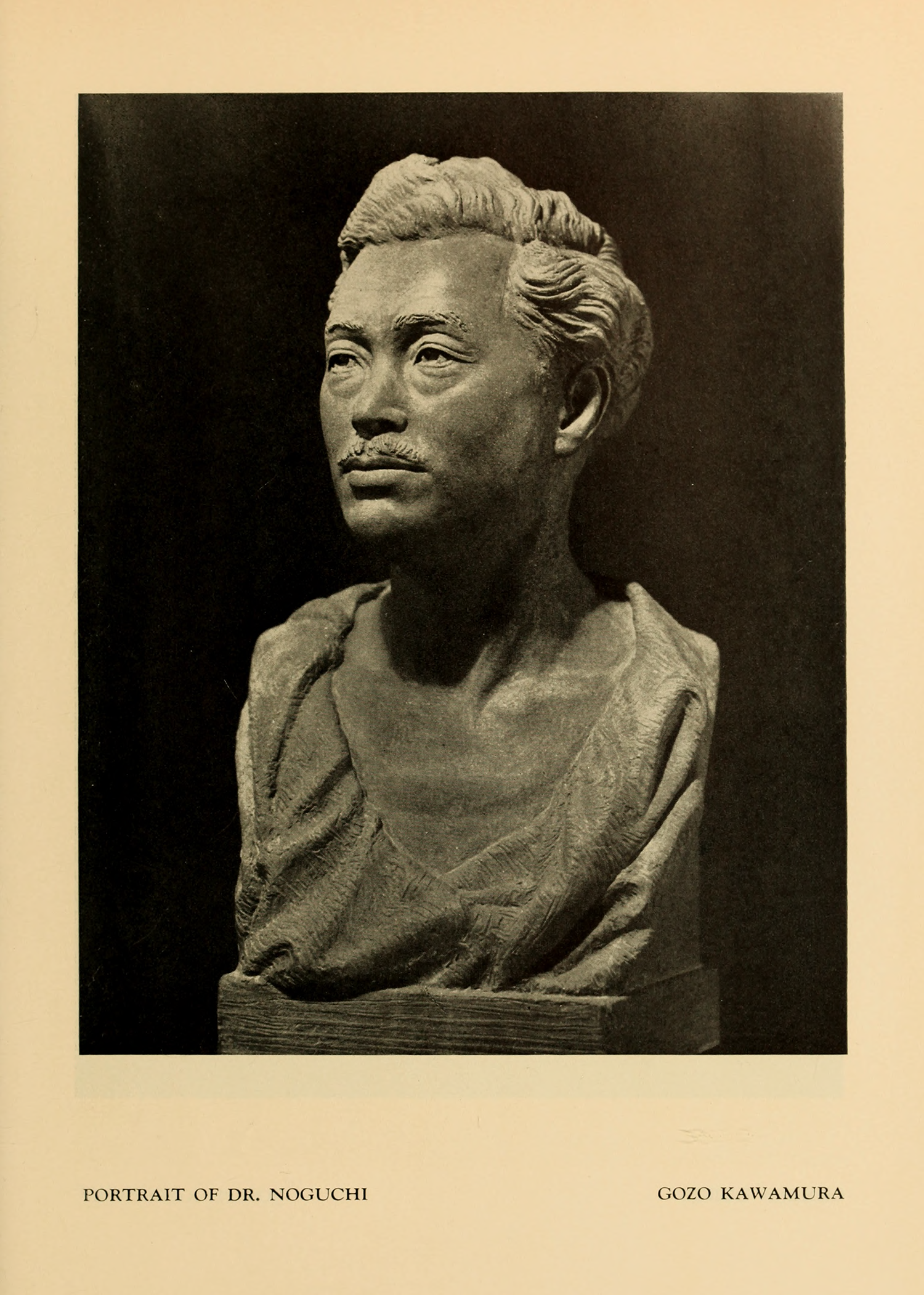
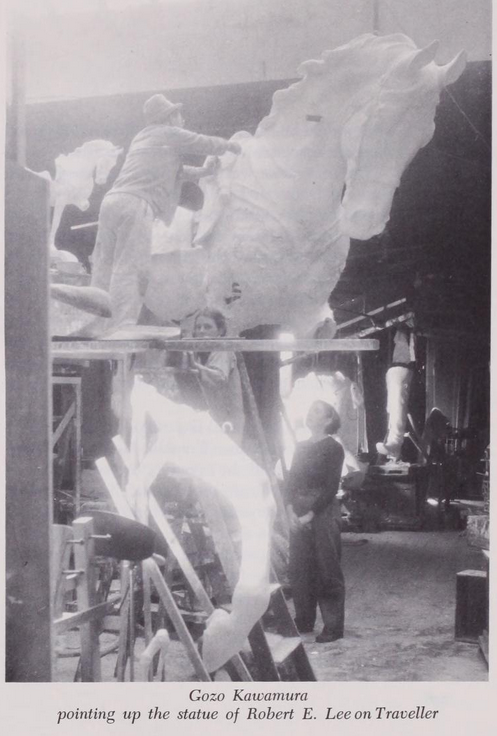
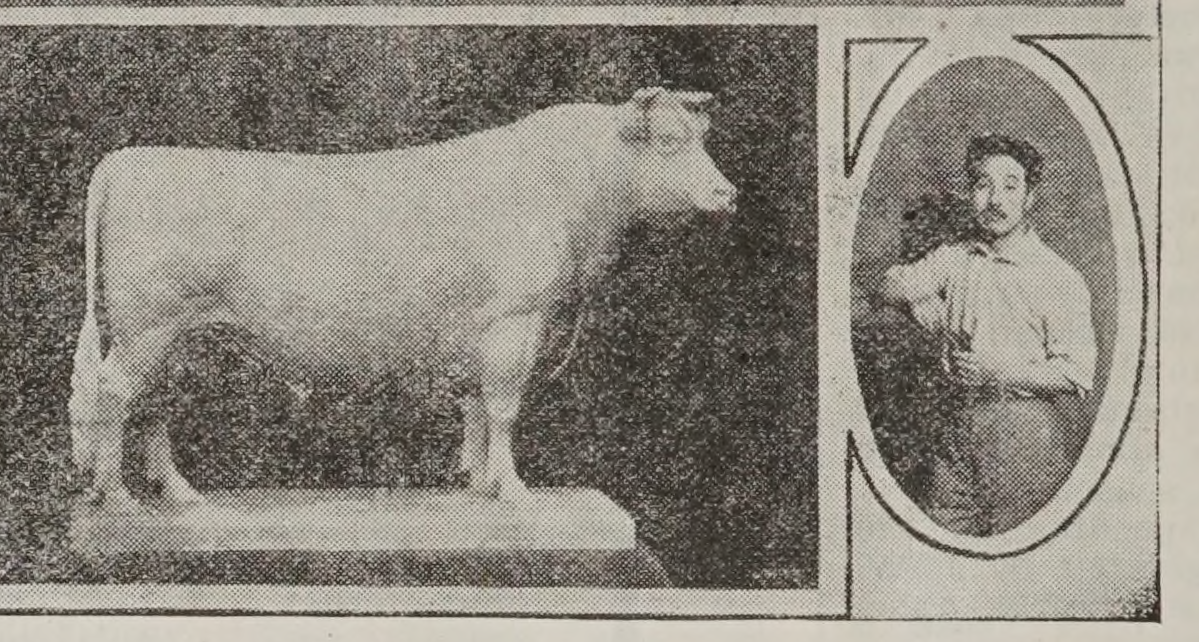
A bust by Kawamura of Doctor Hideyo Noguchi, Japanese syphilis researcher | Gozo enlarging an equestrian statue of Robert E. Lee | a cow sculpted by Gozo, 1923, Cloverland Magazine, the Internet Archive





Member discussion: